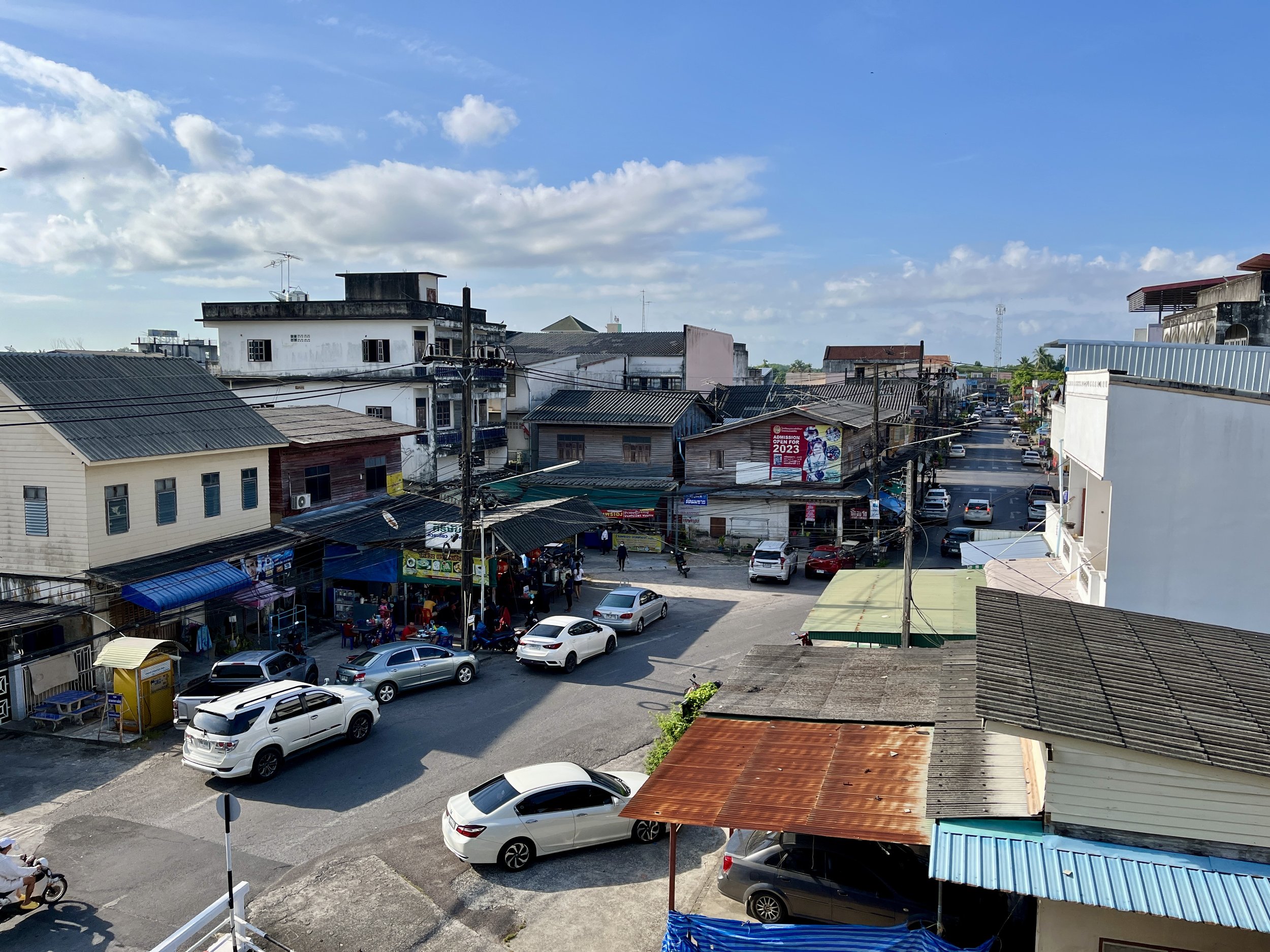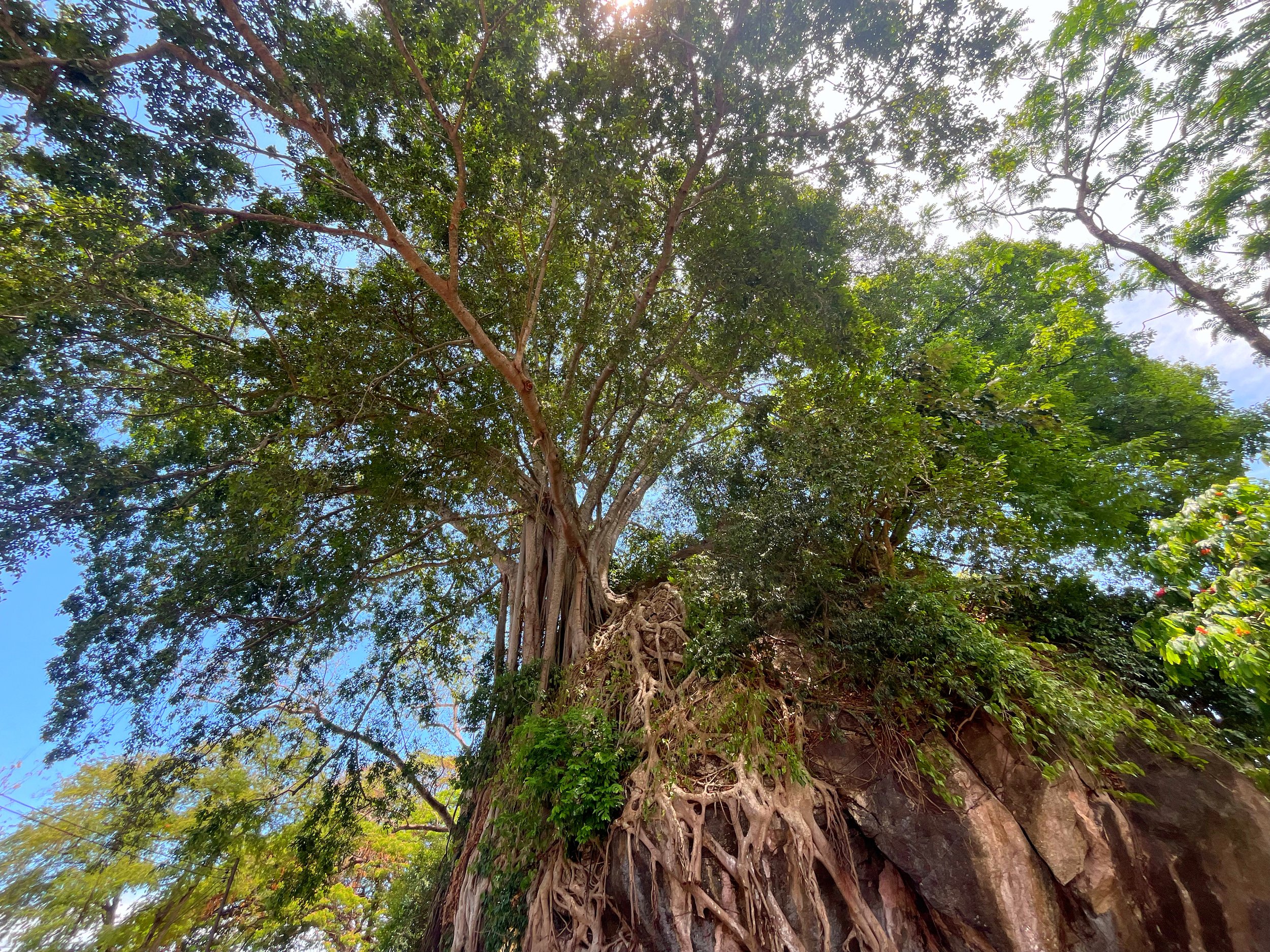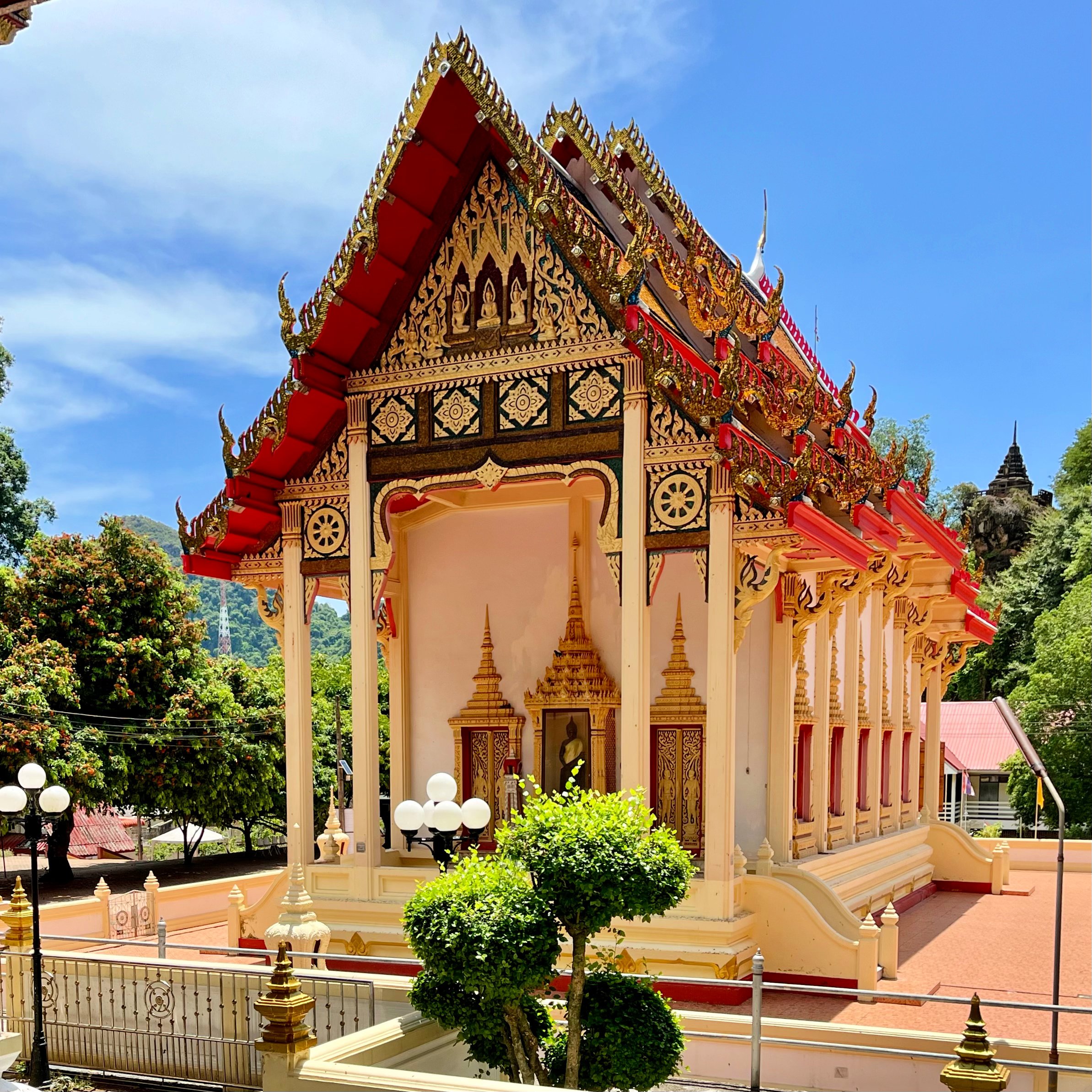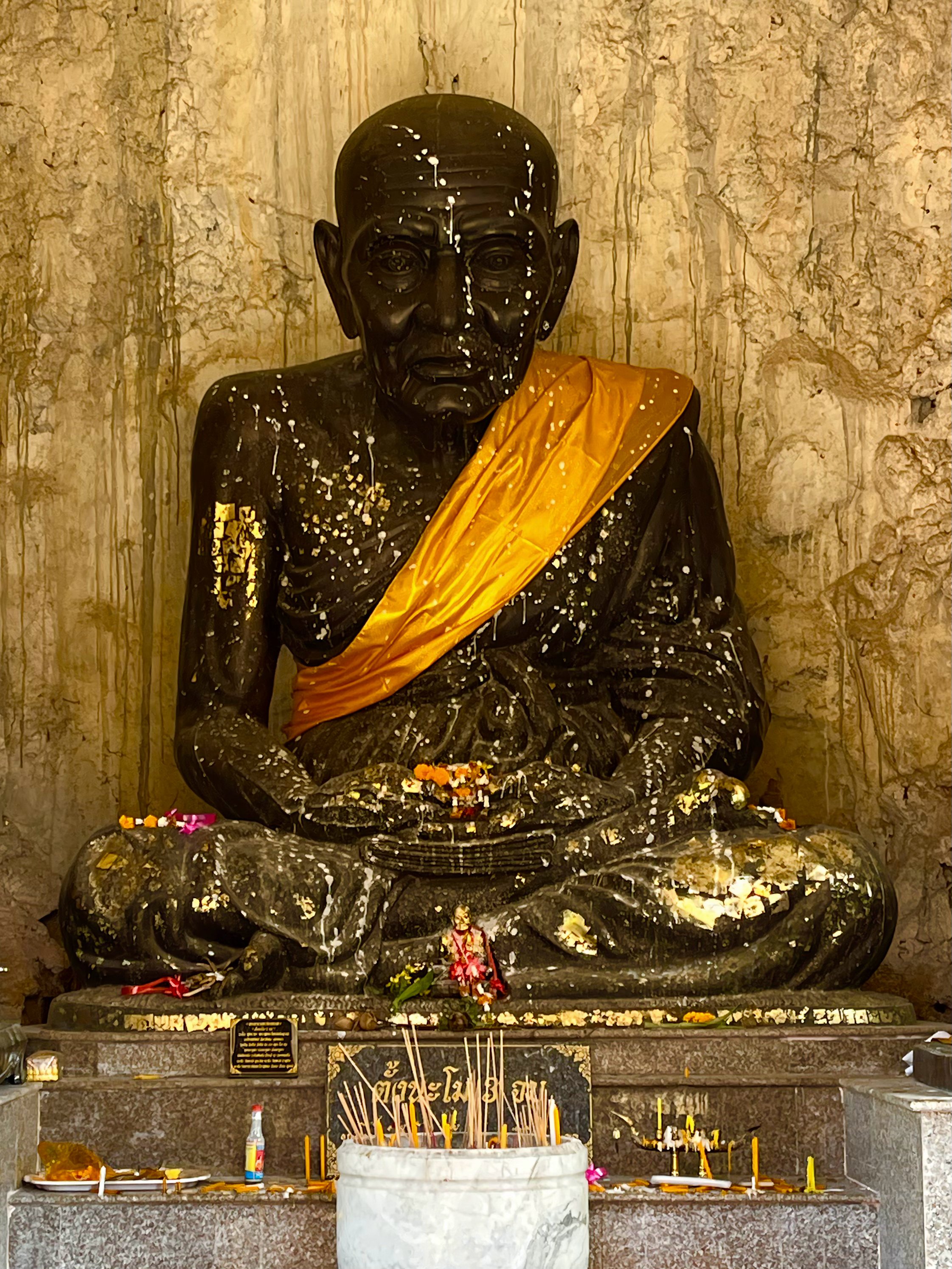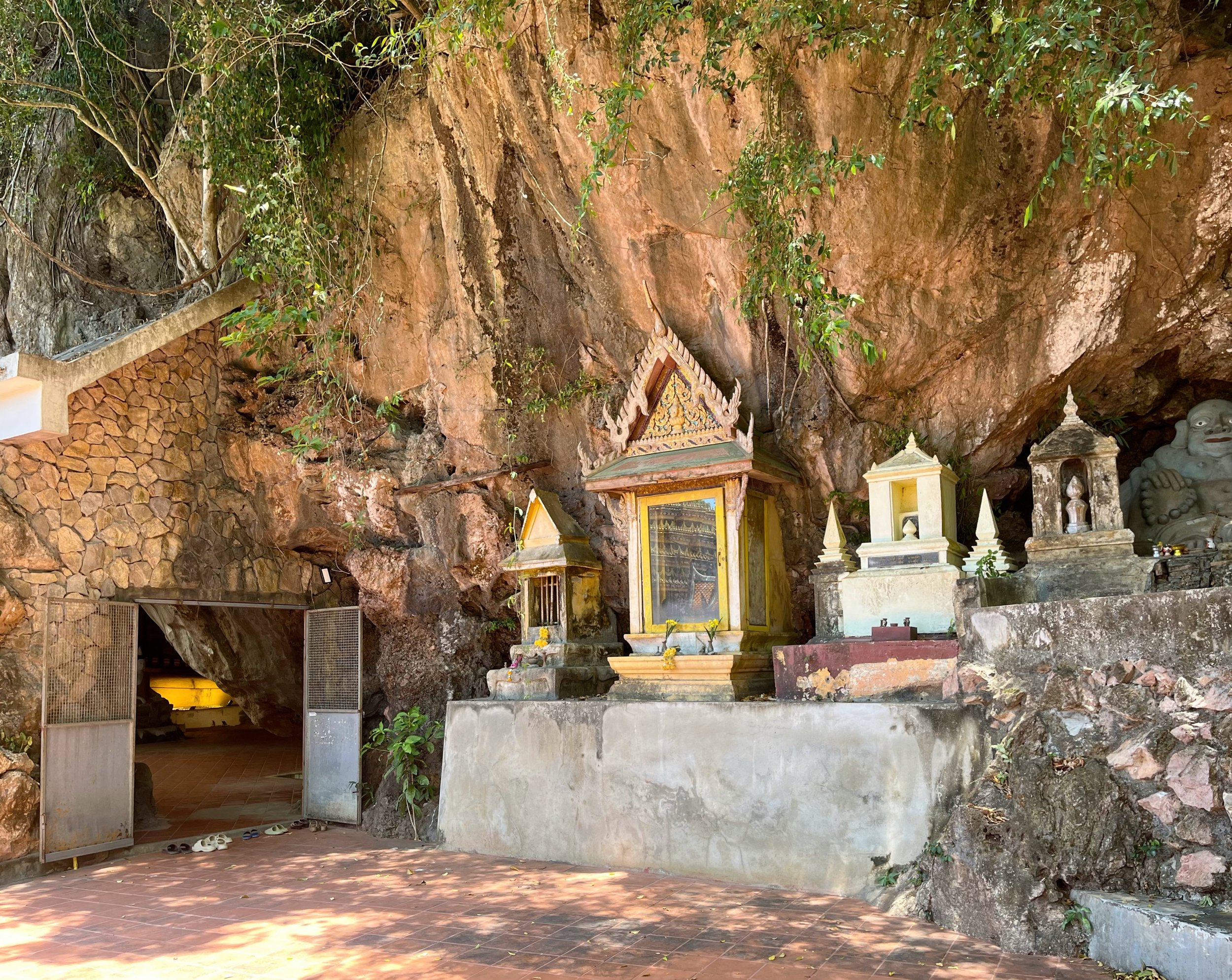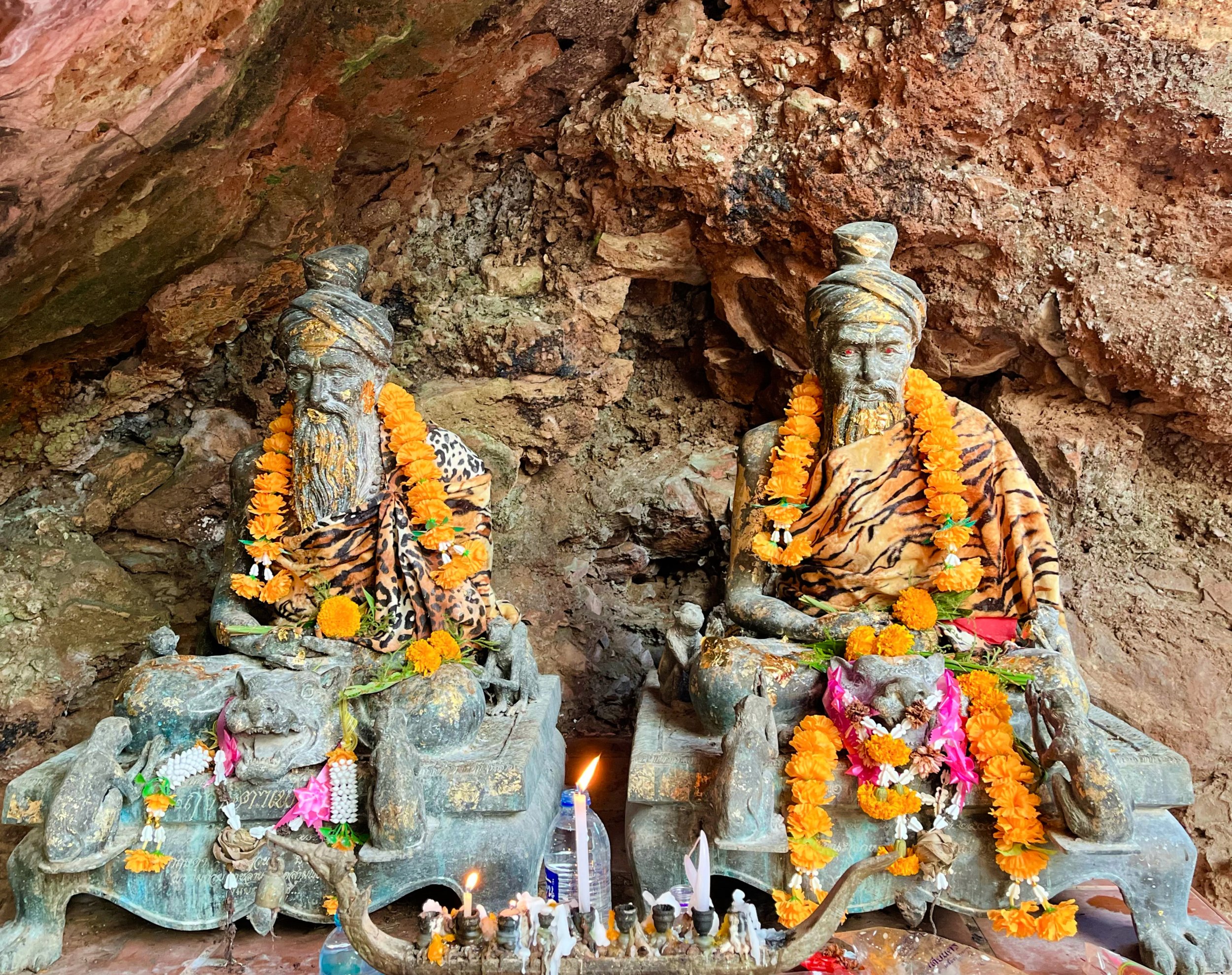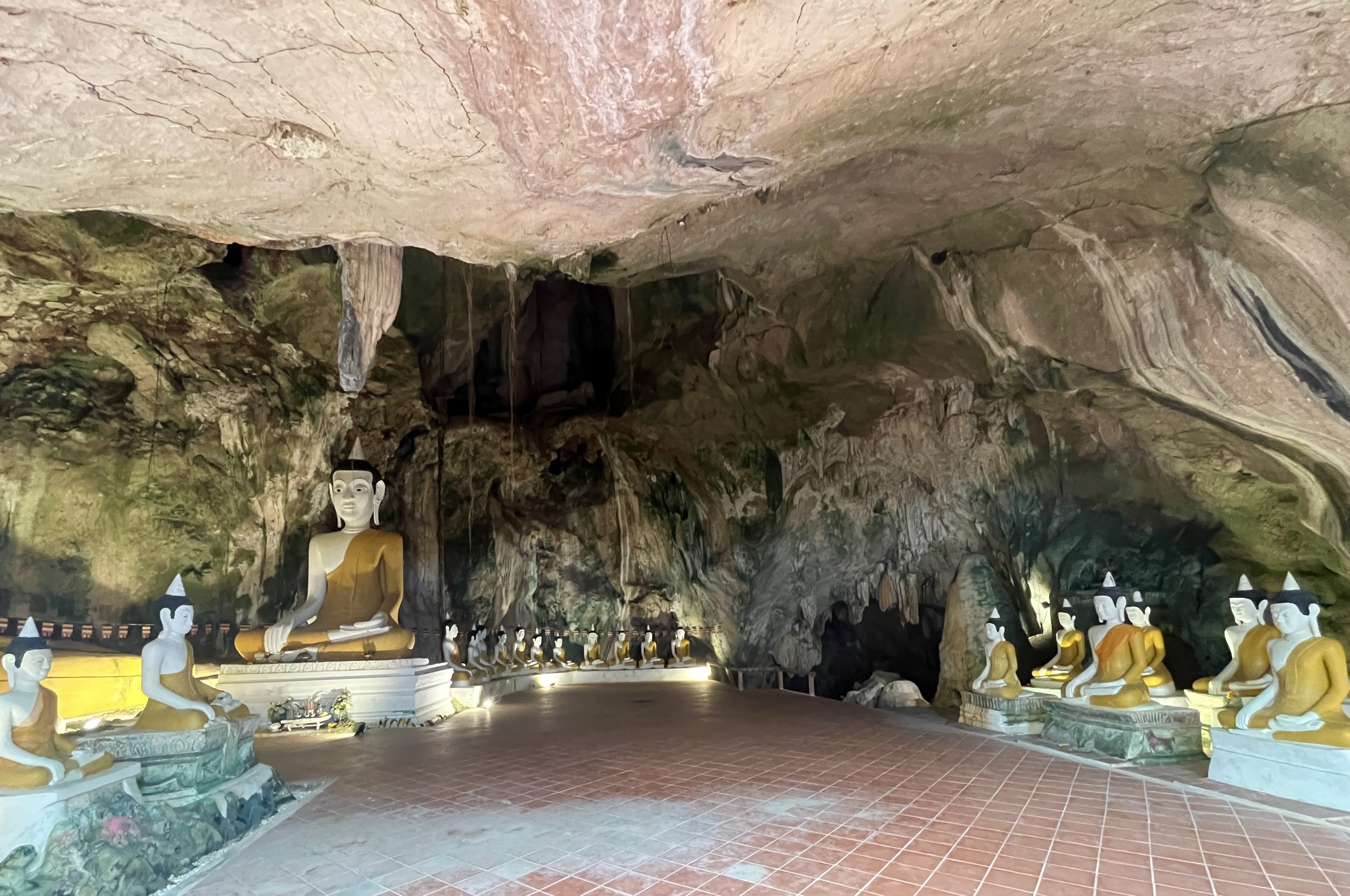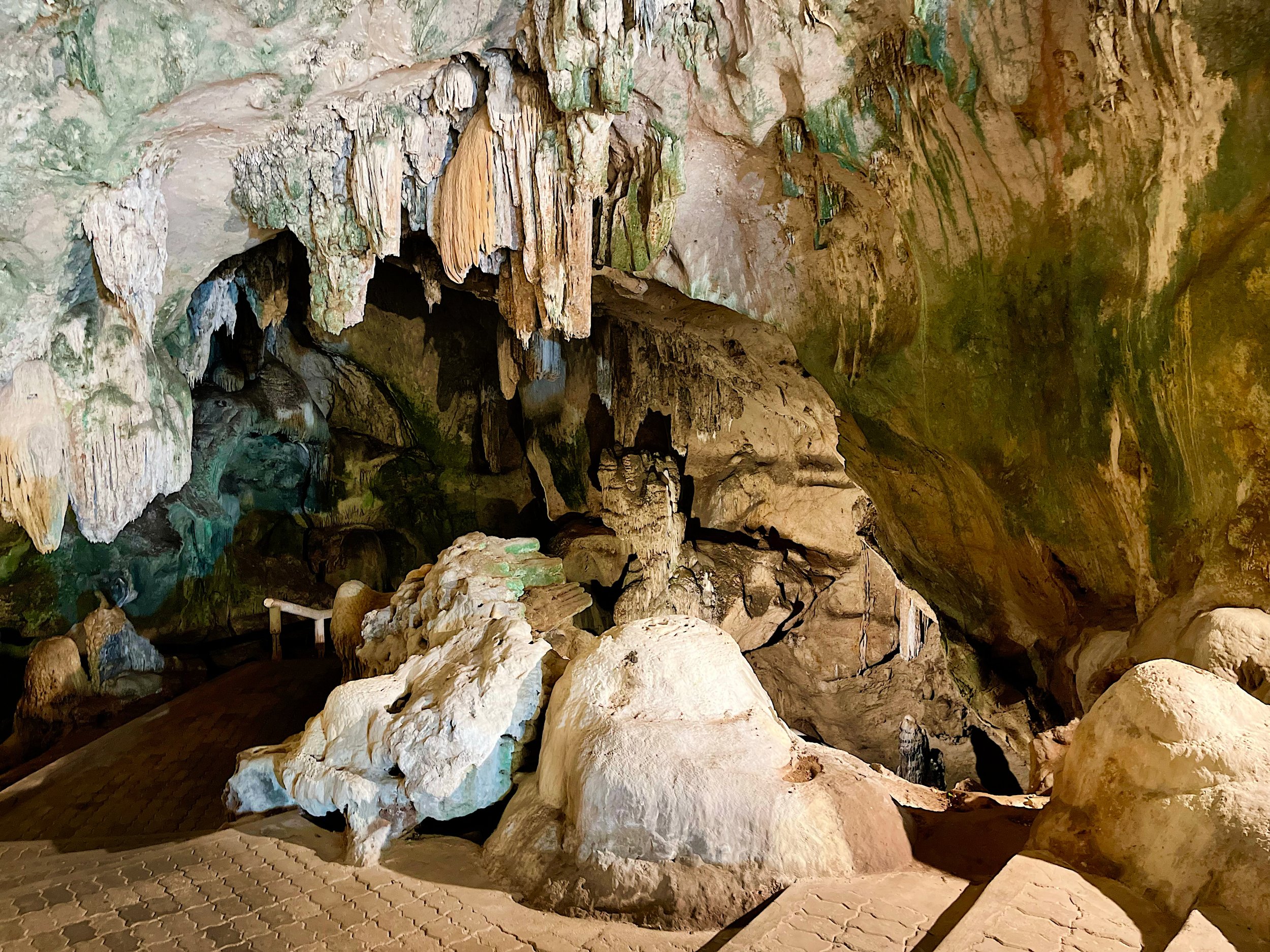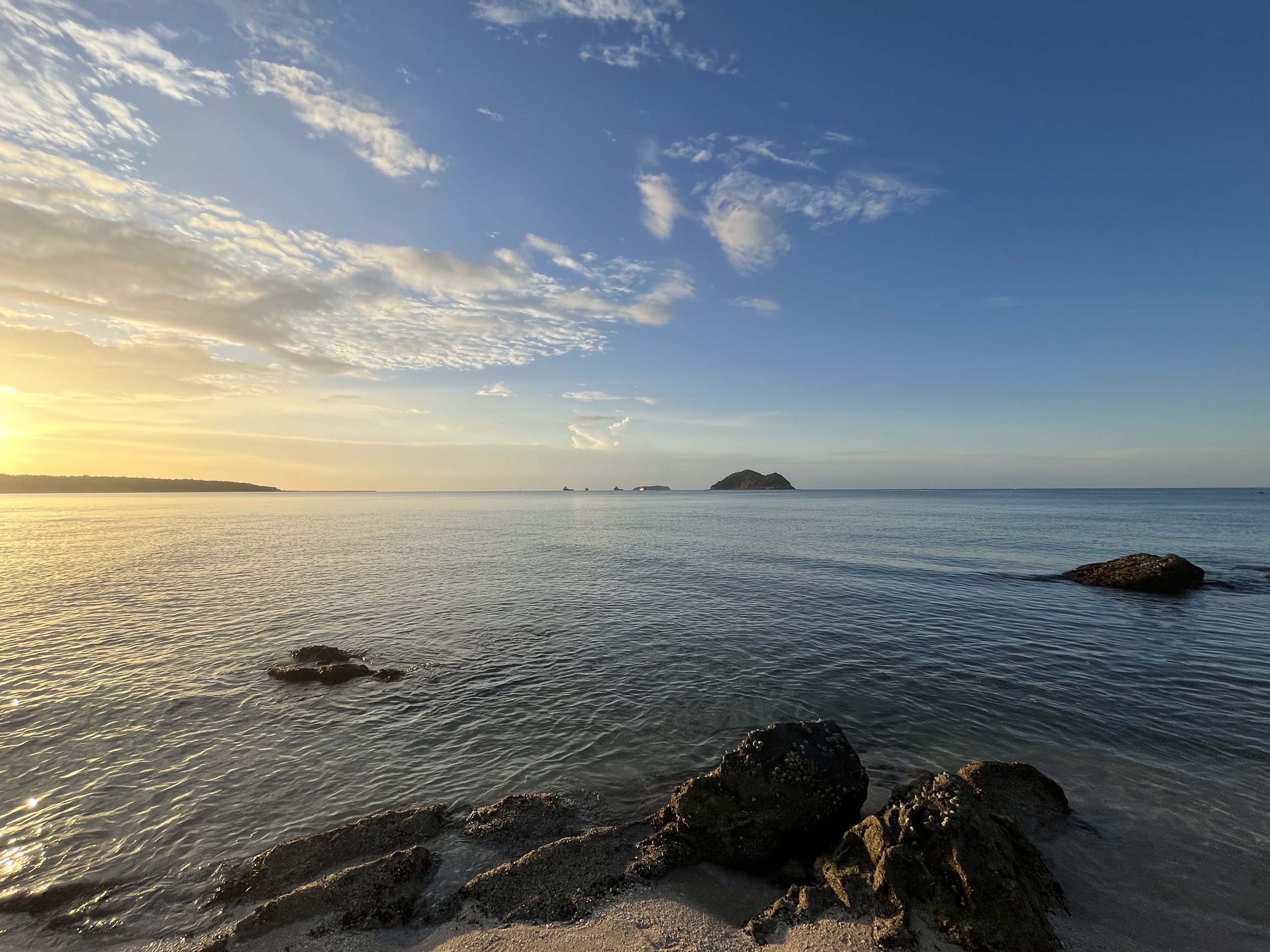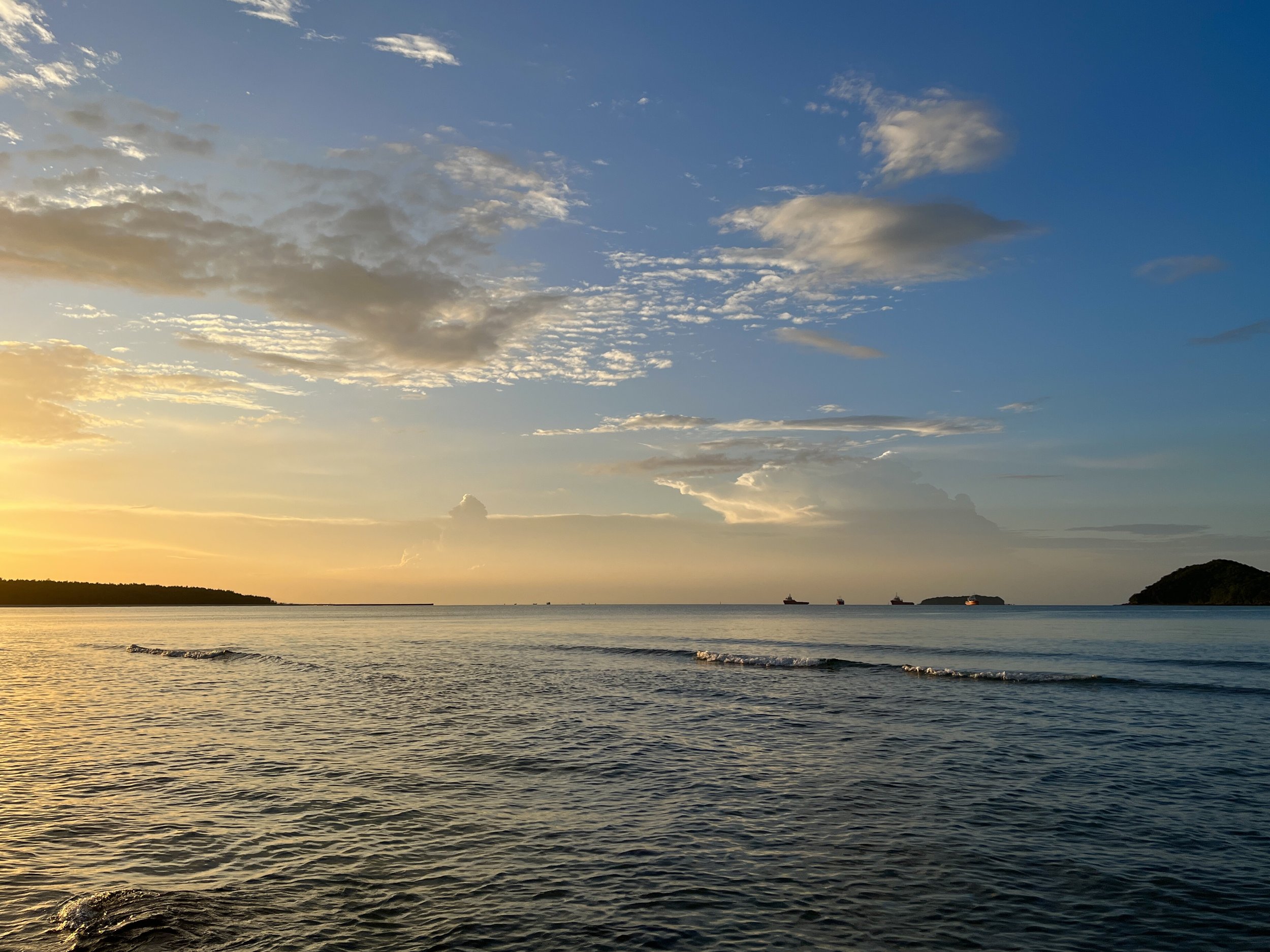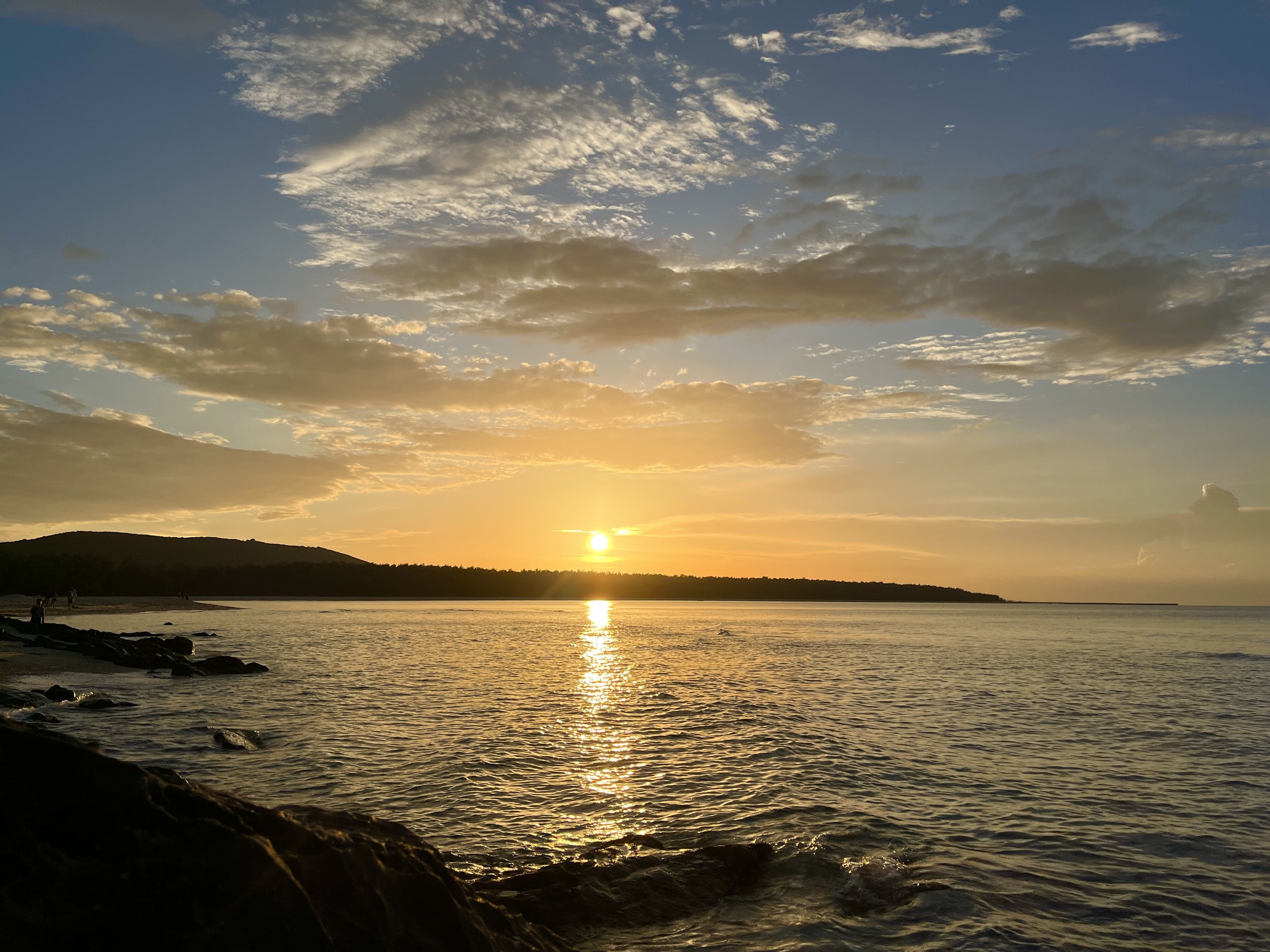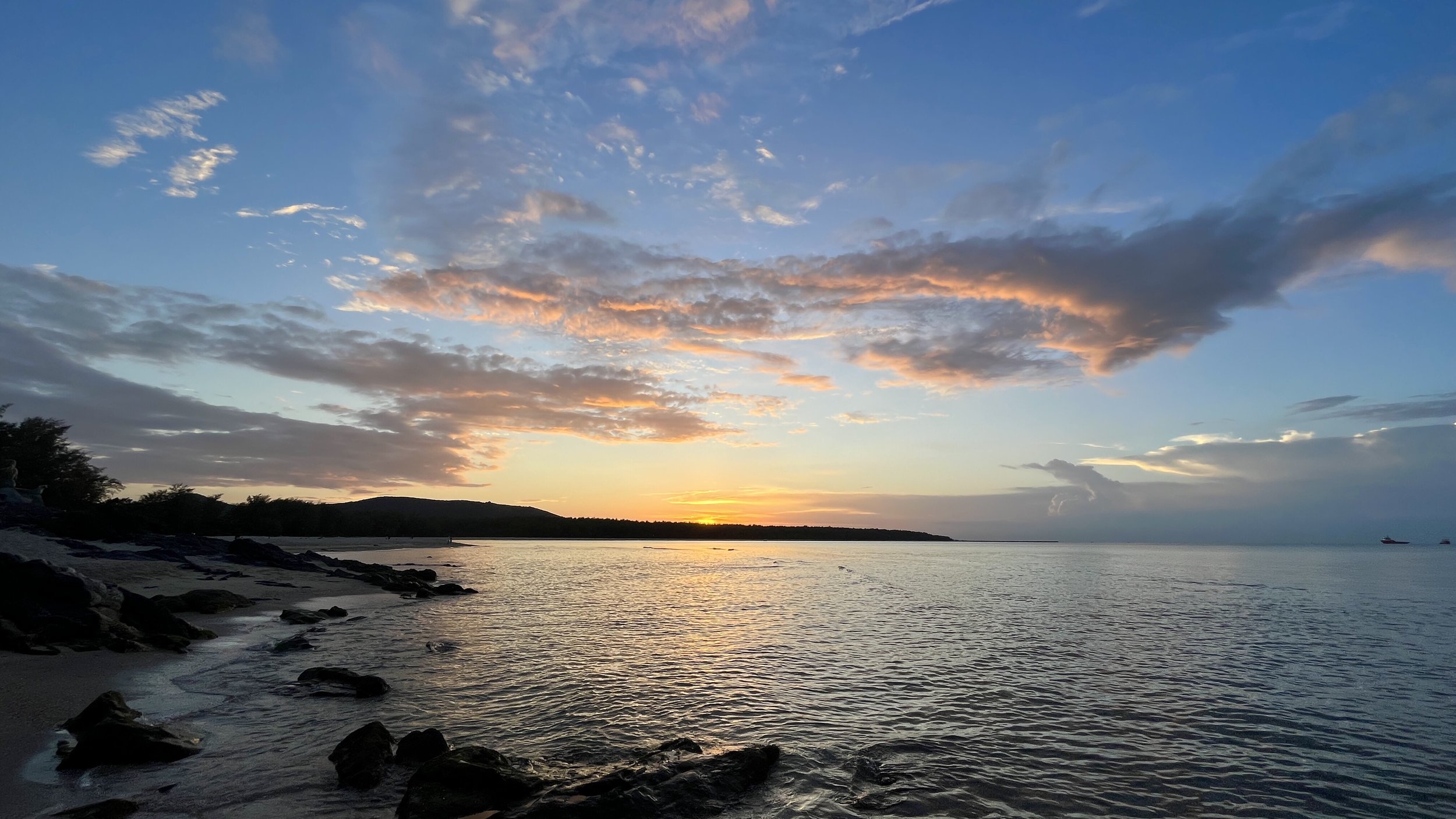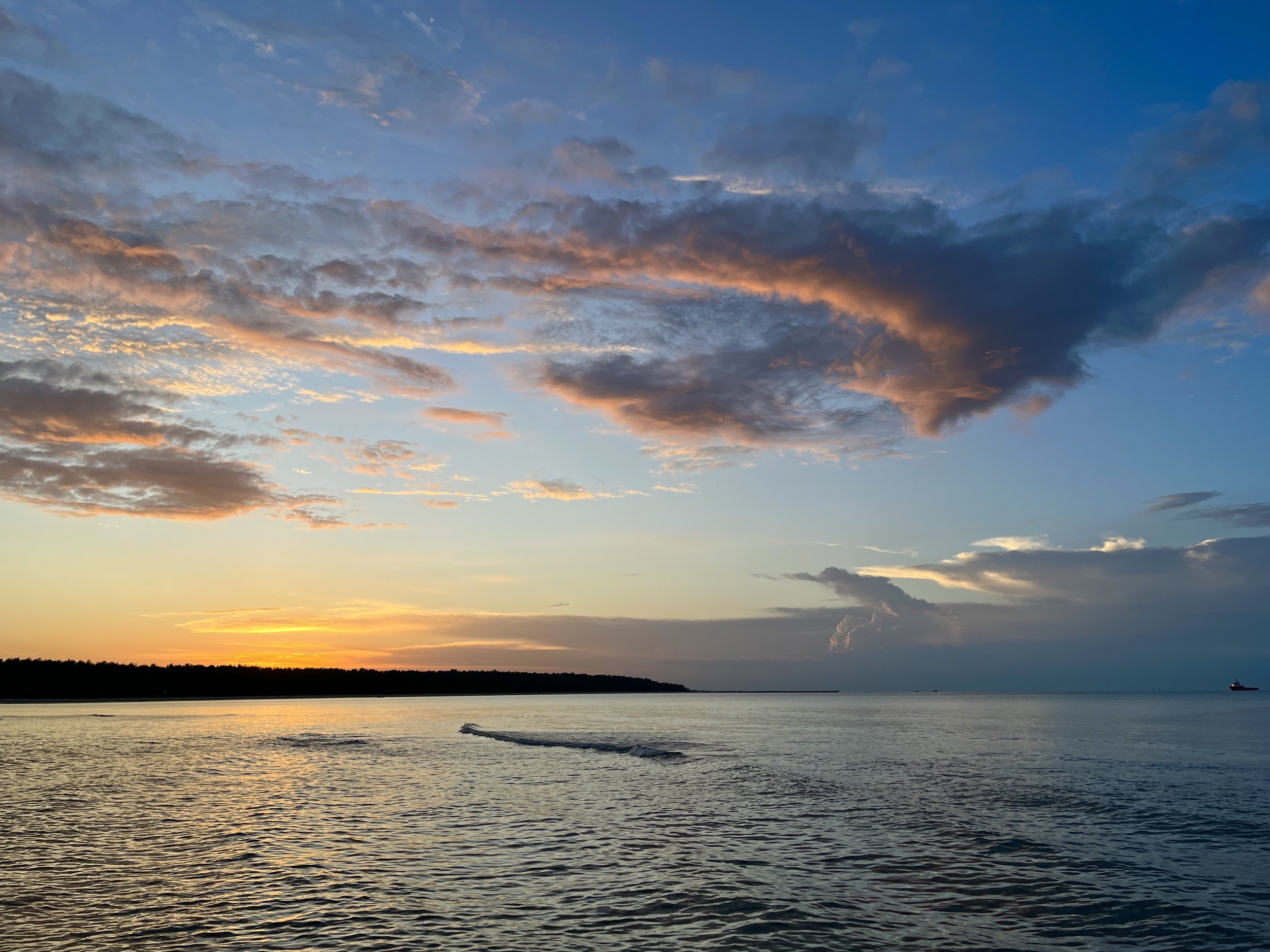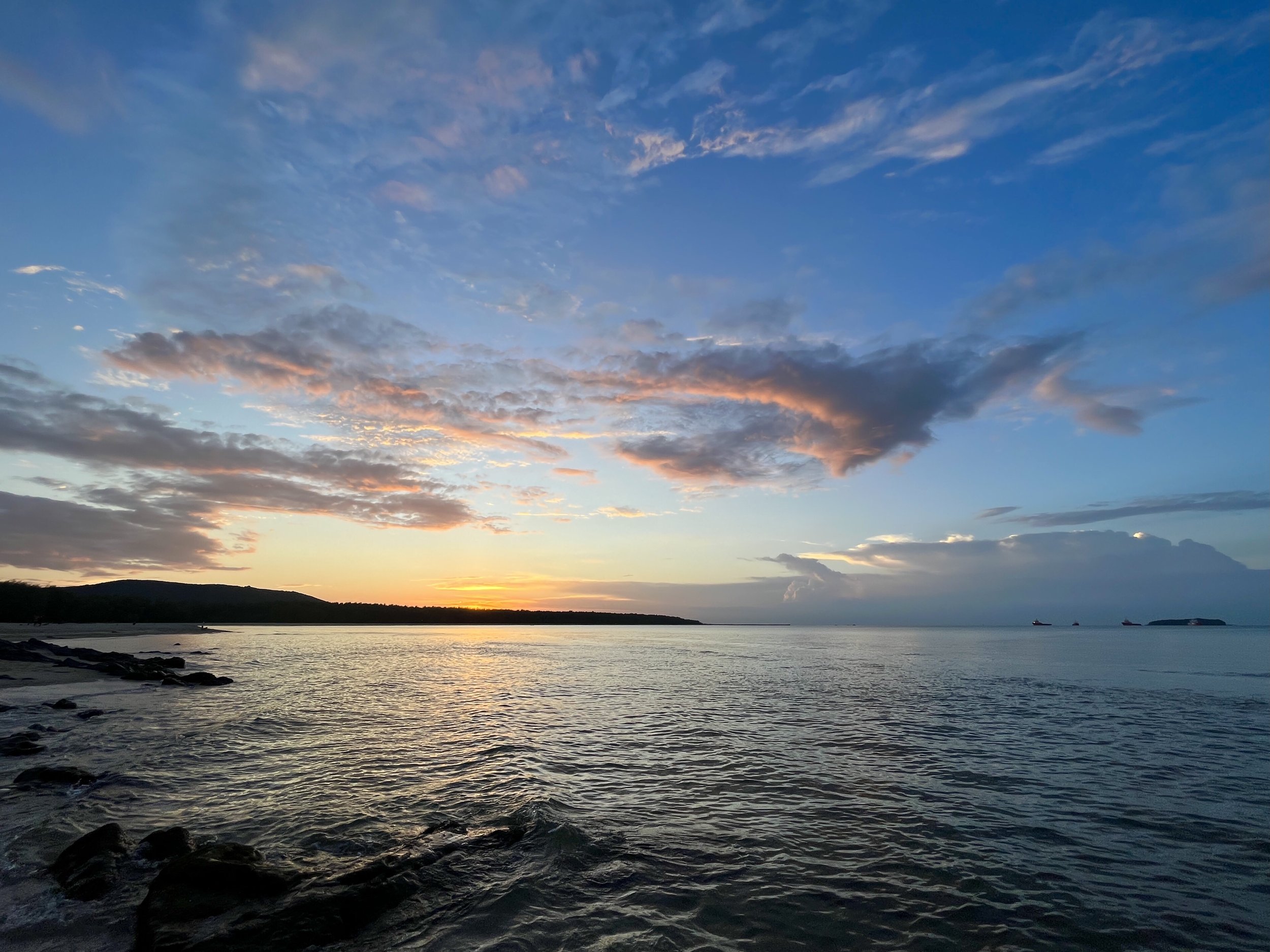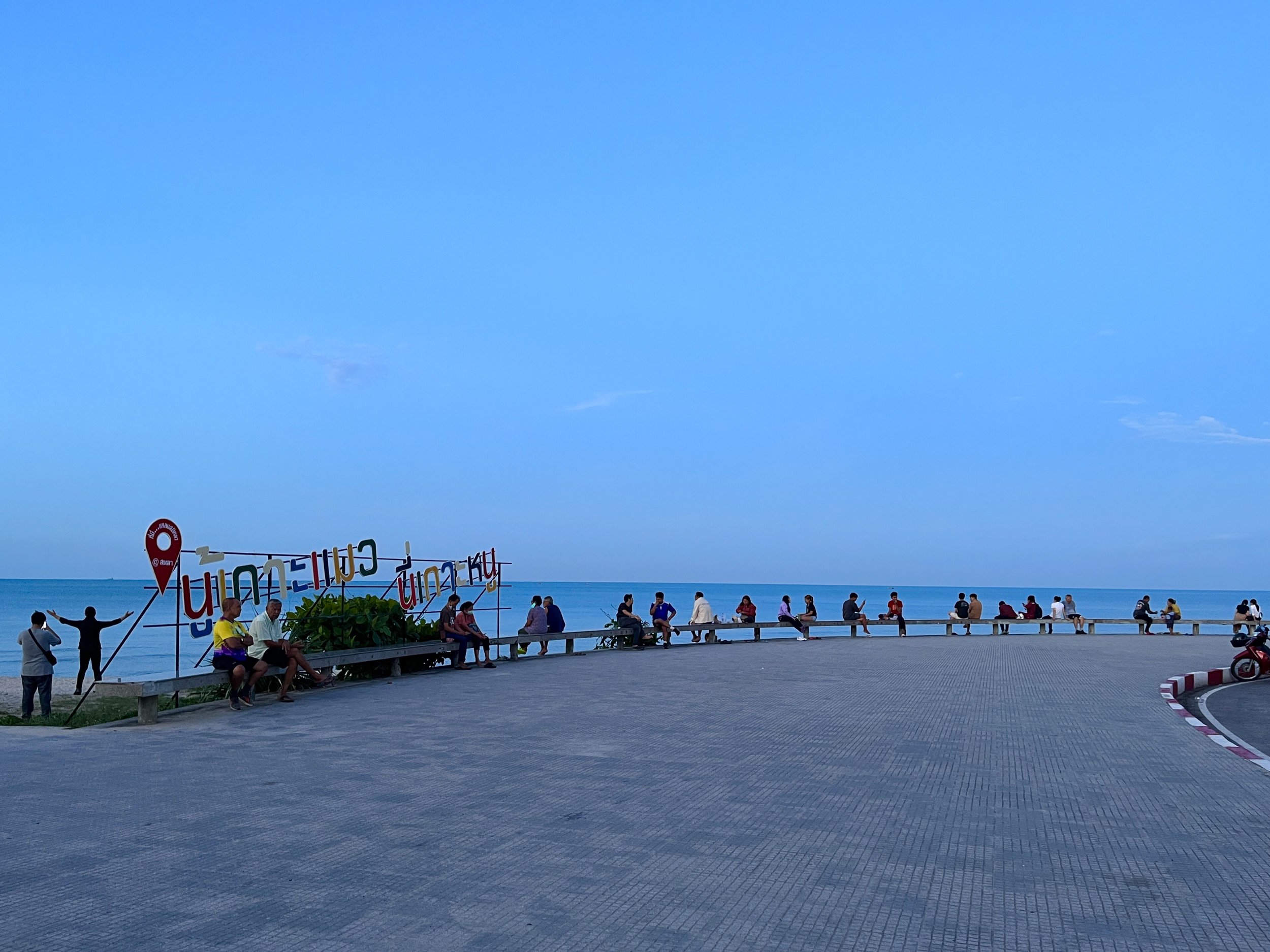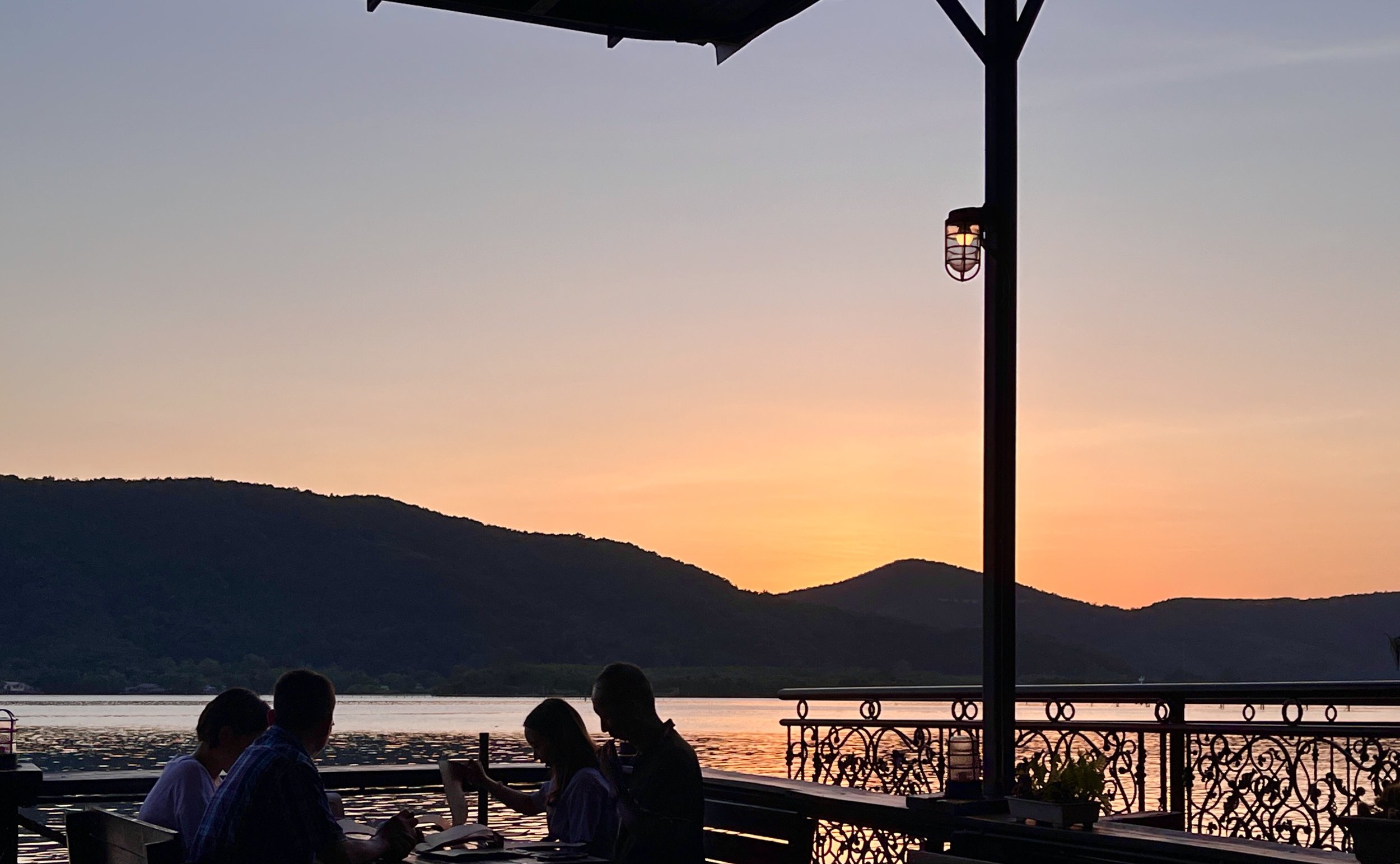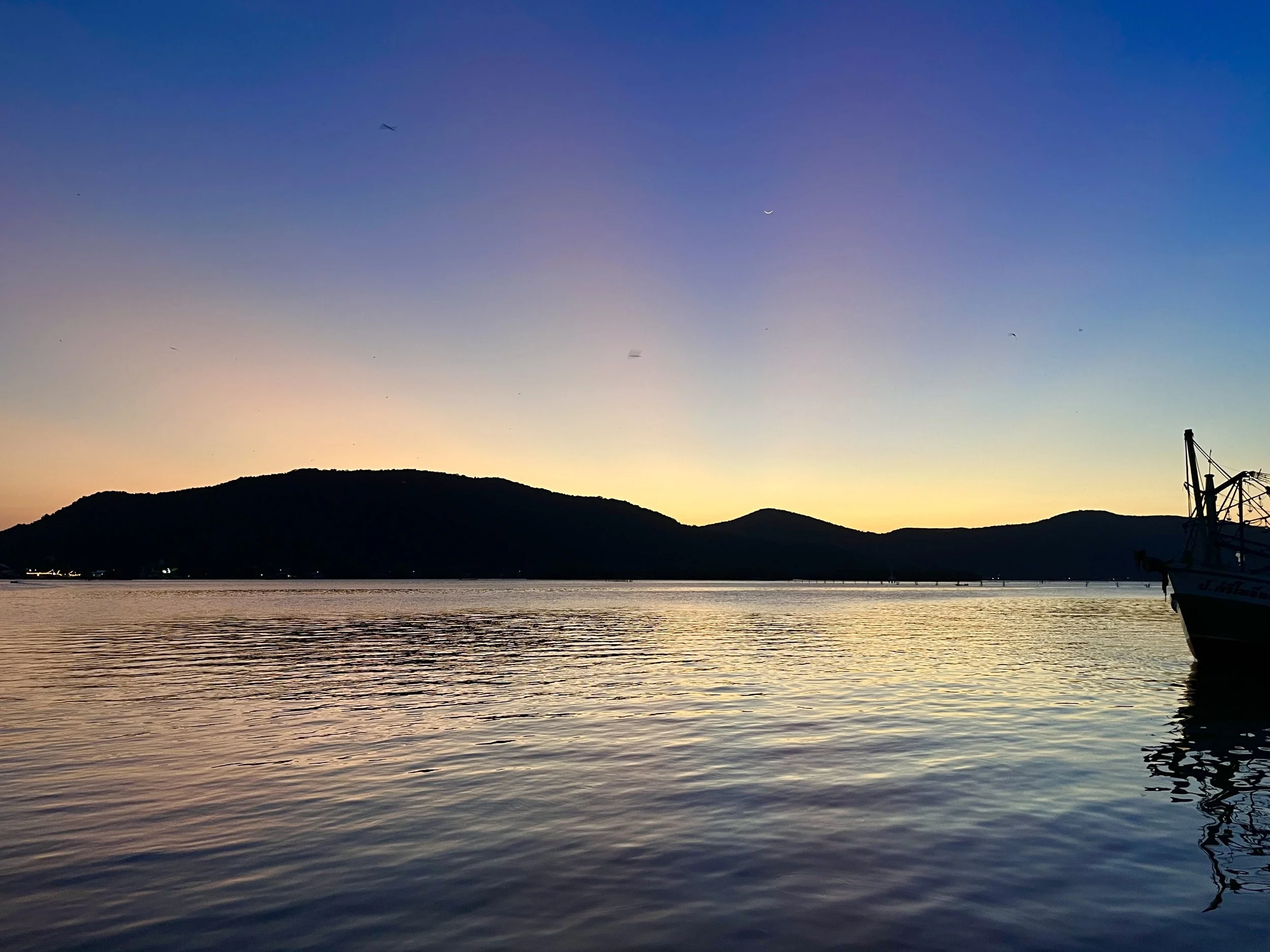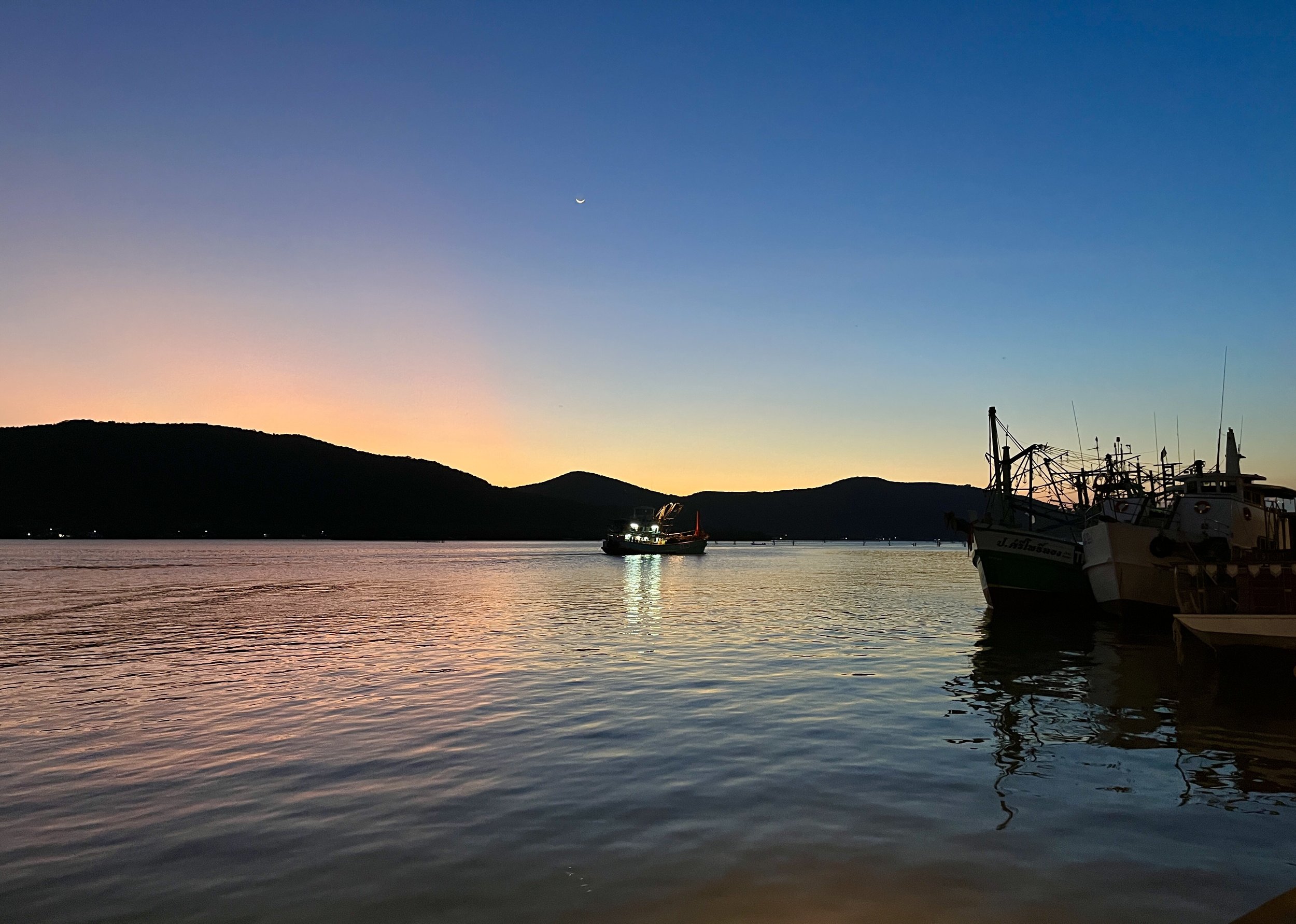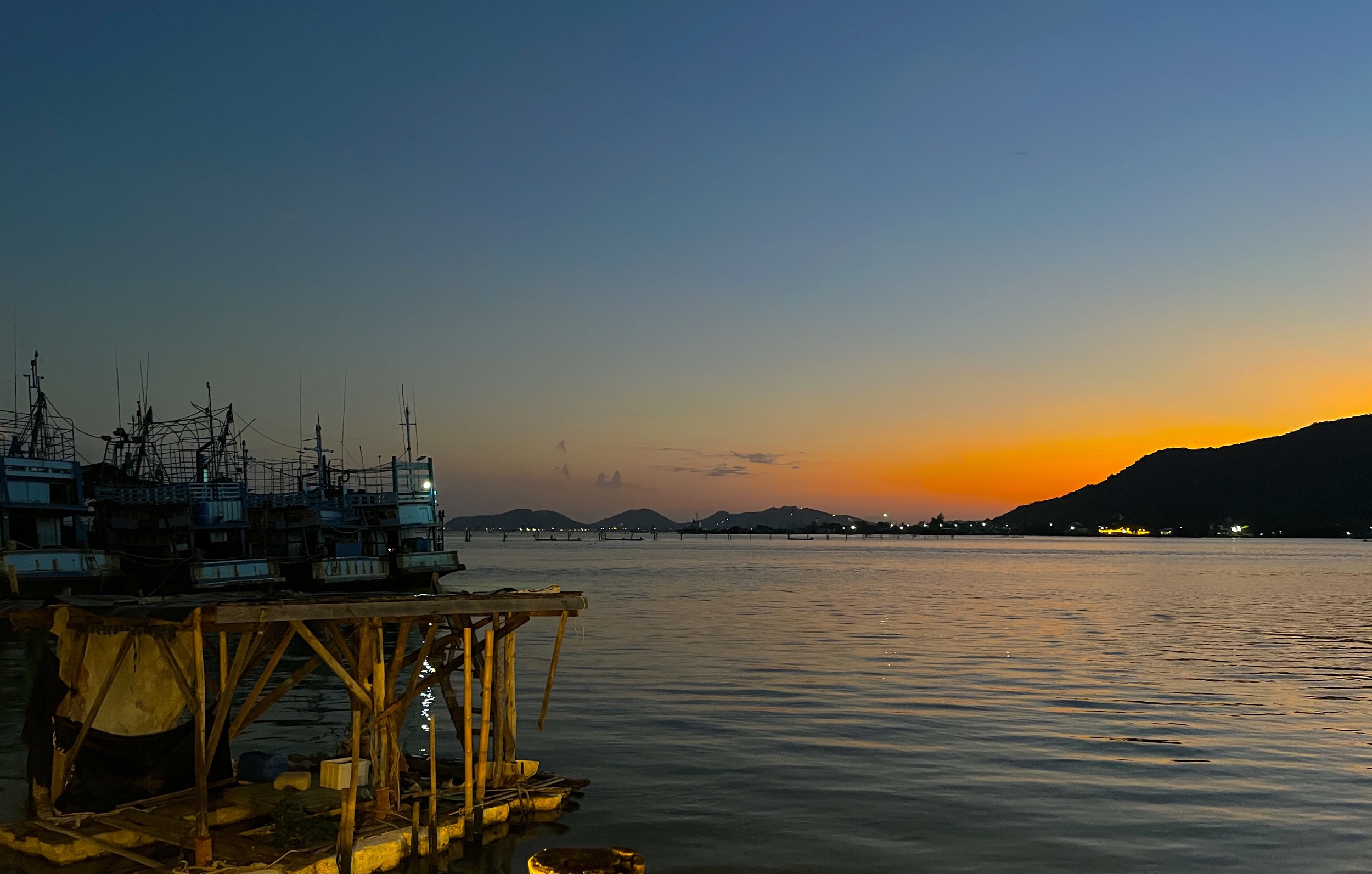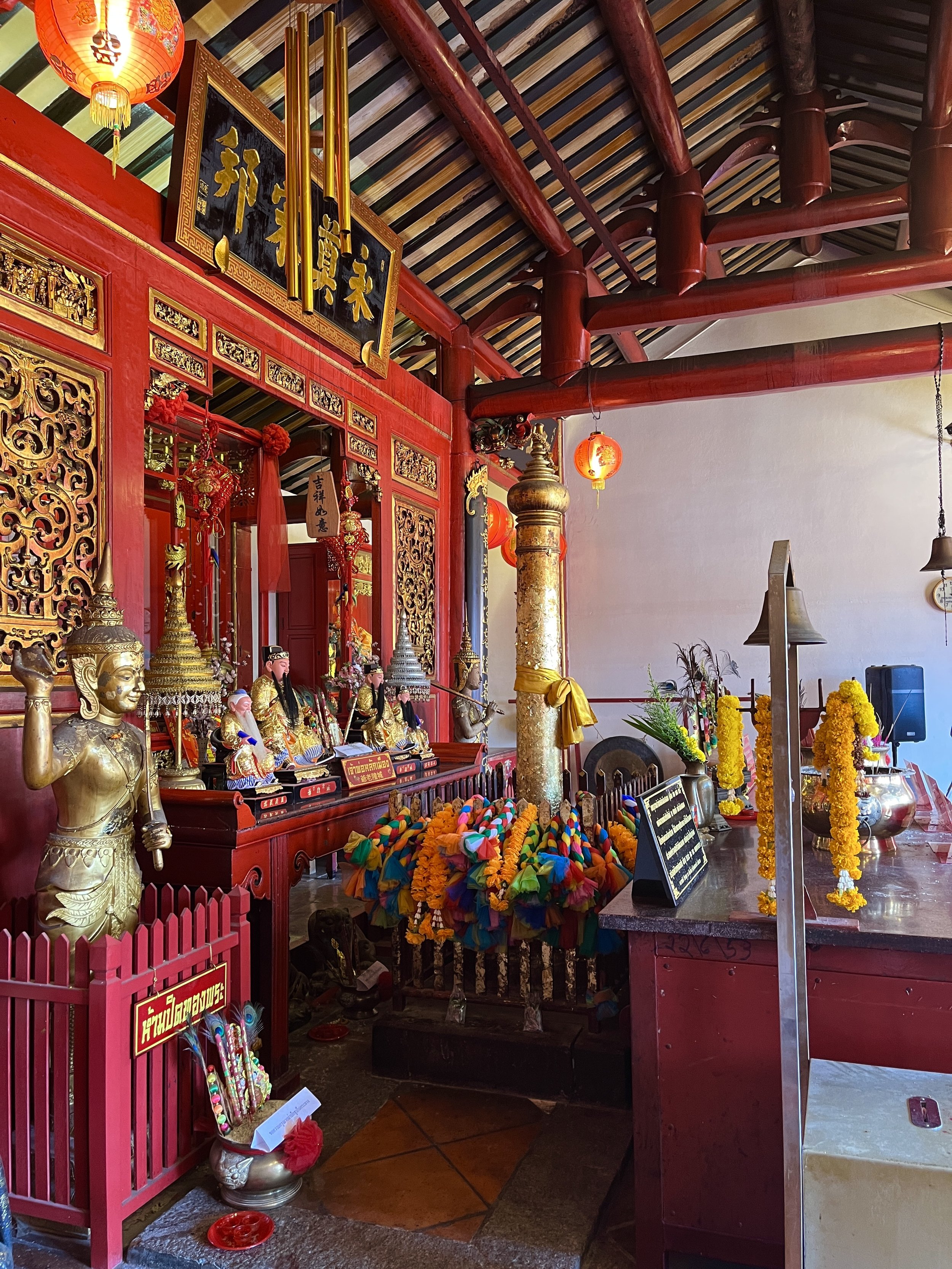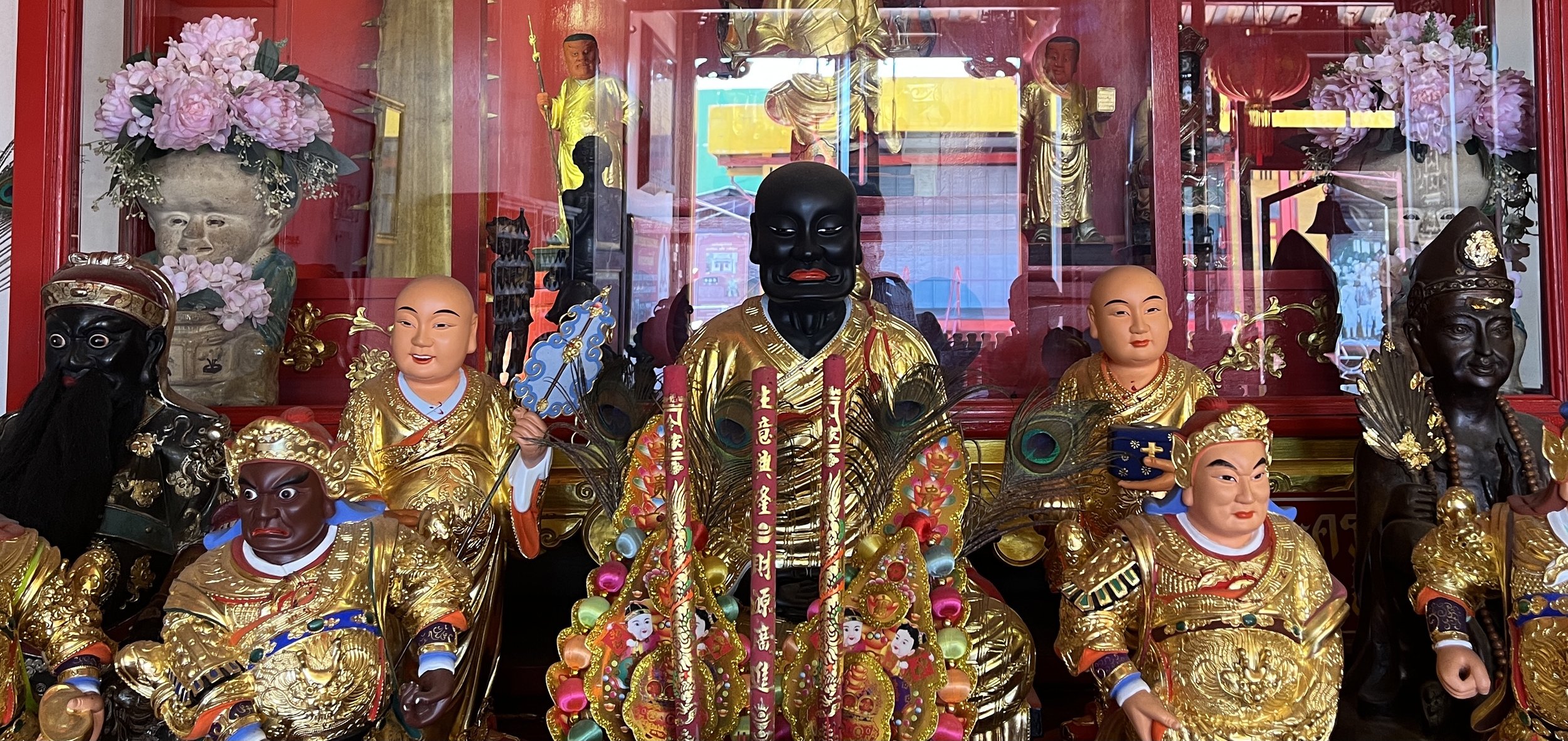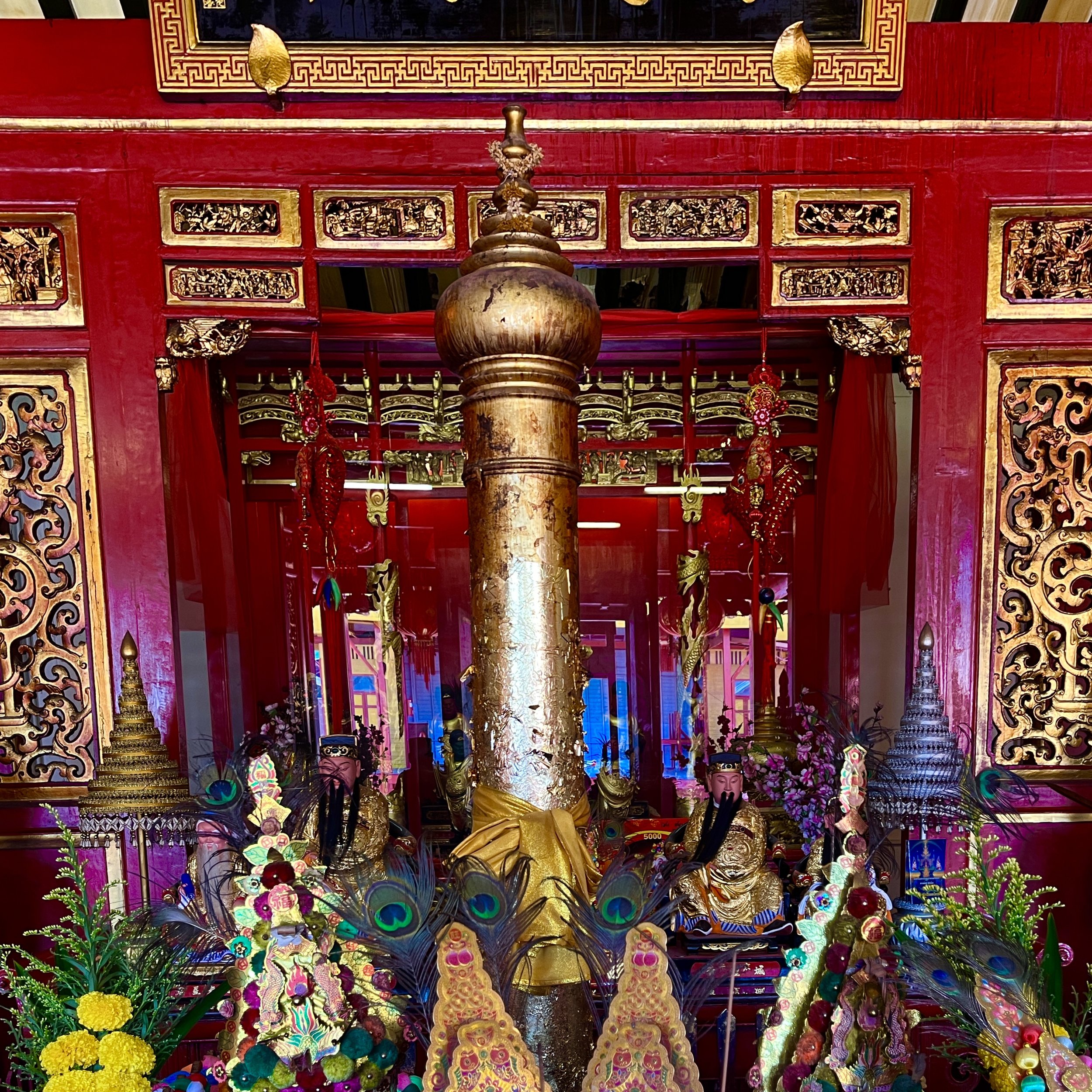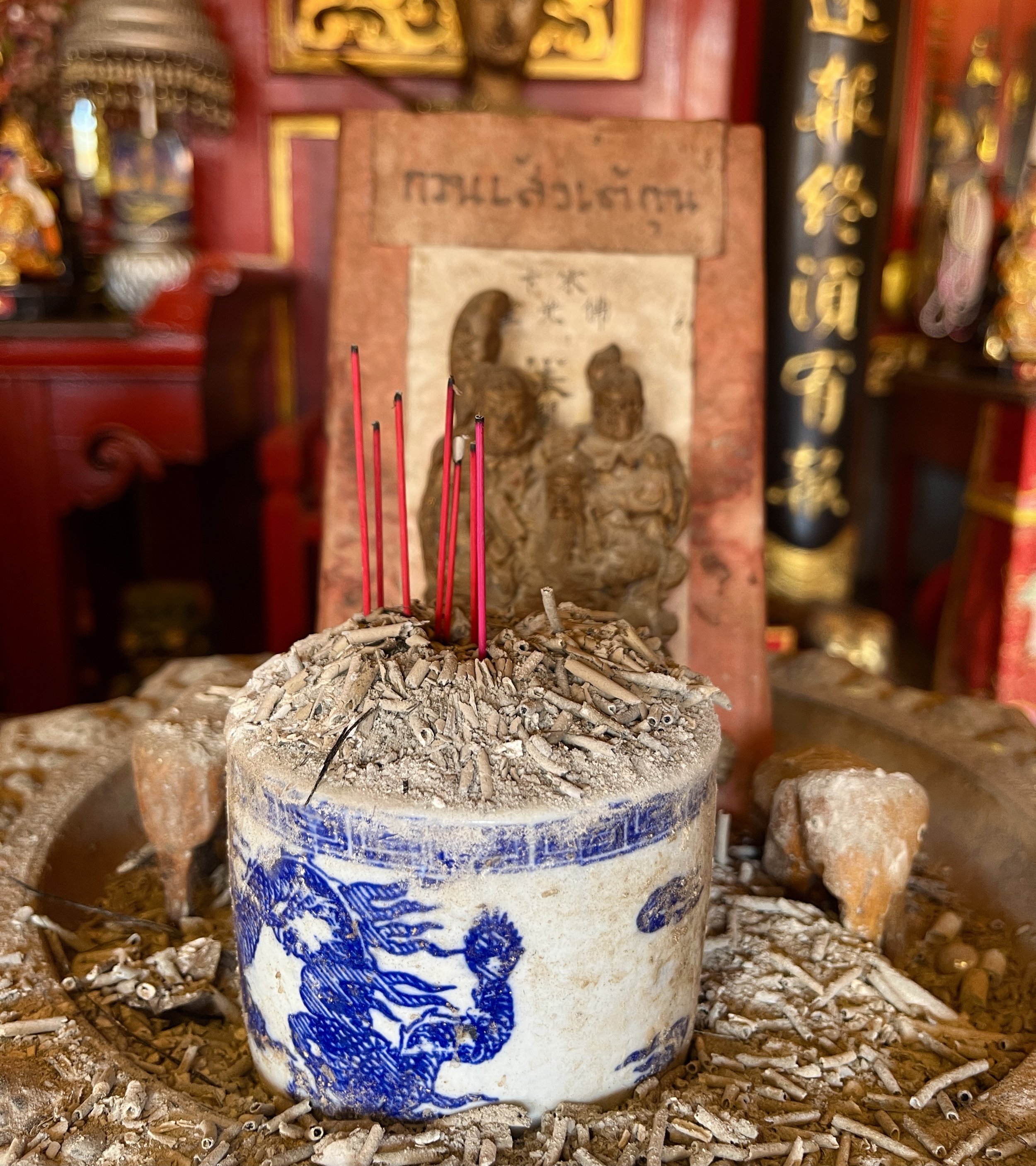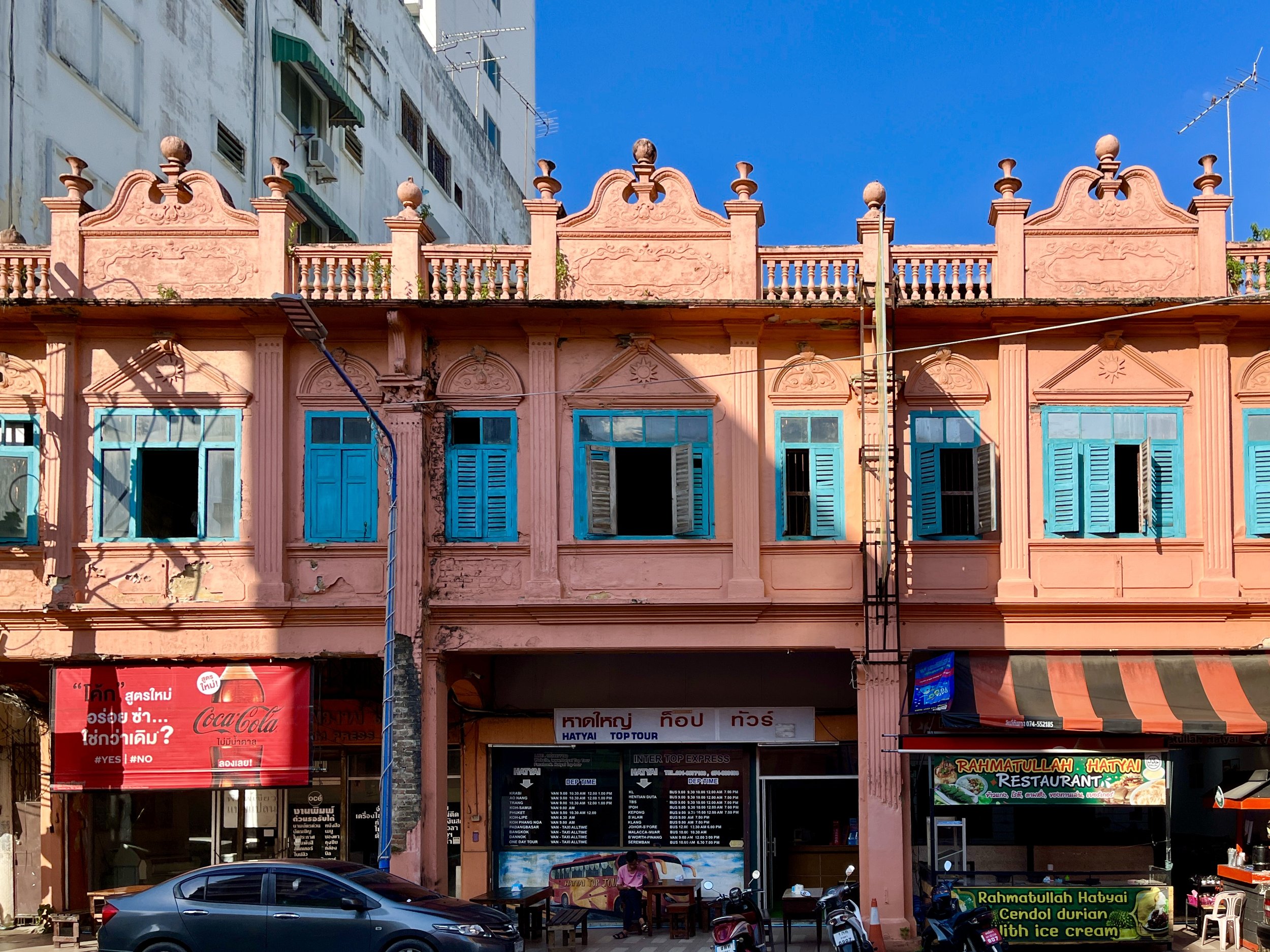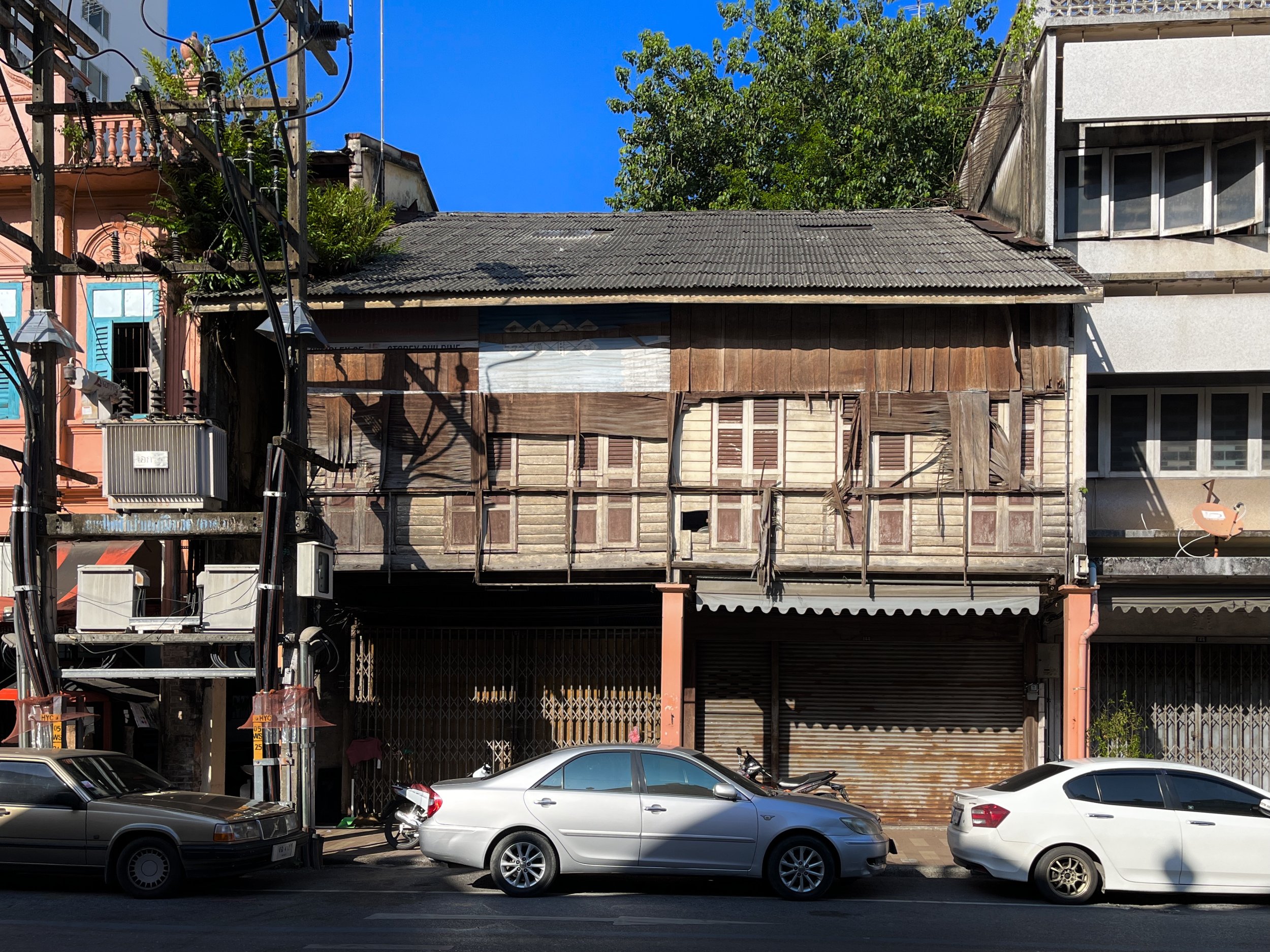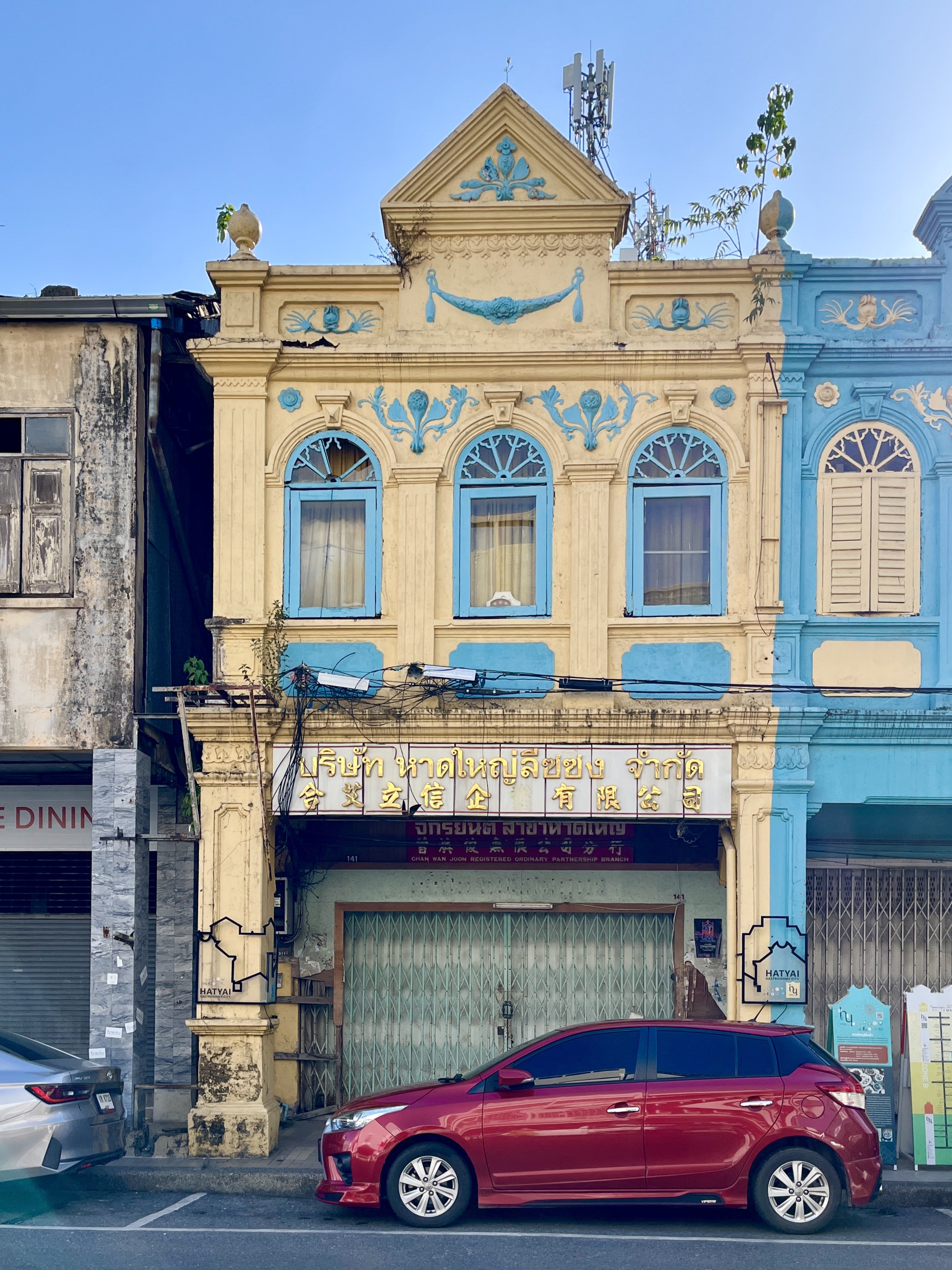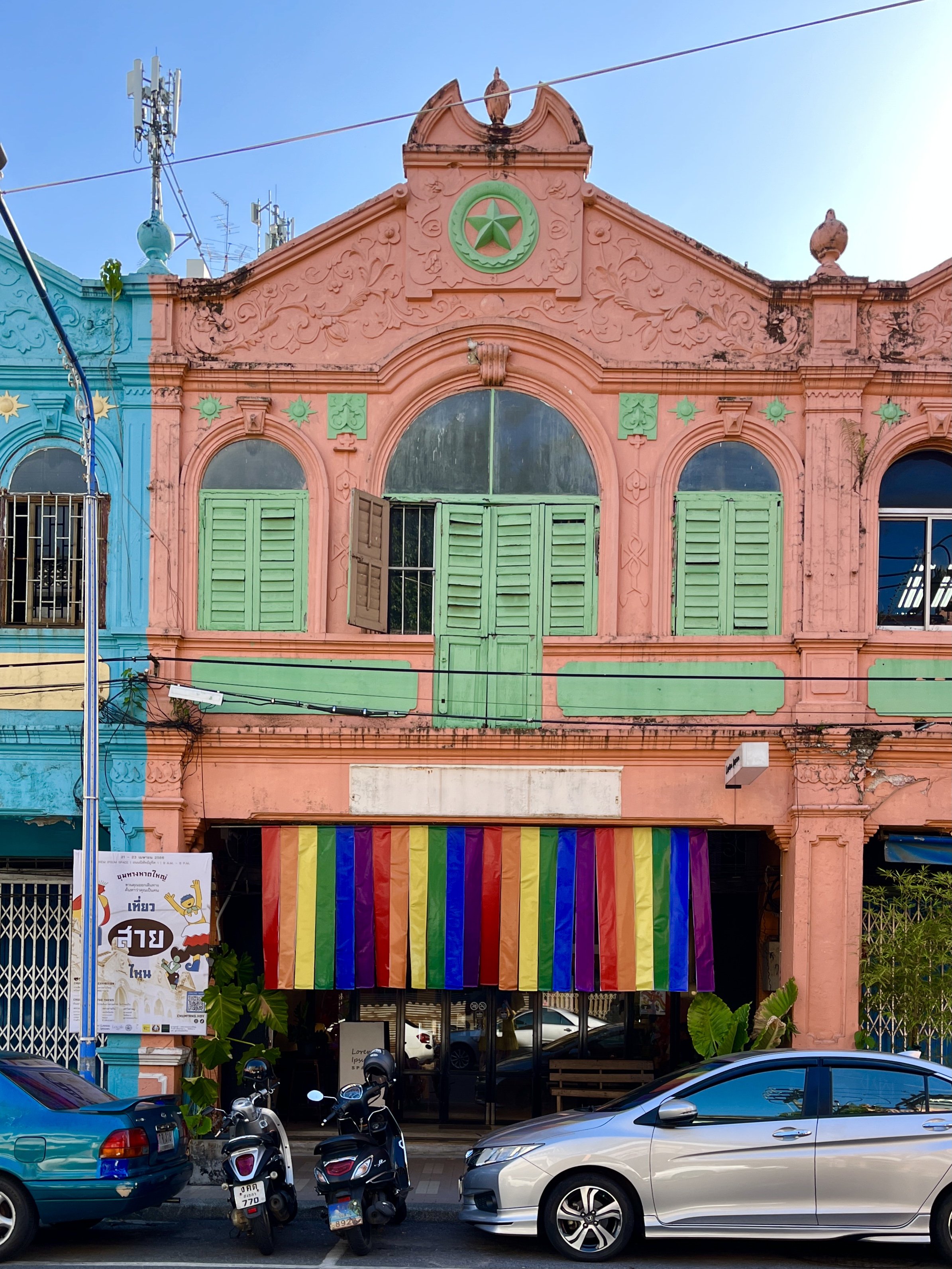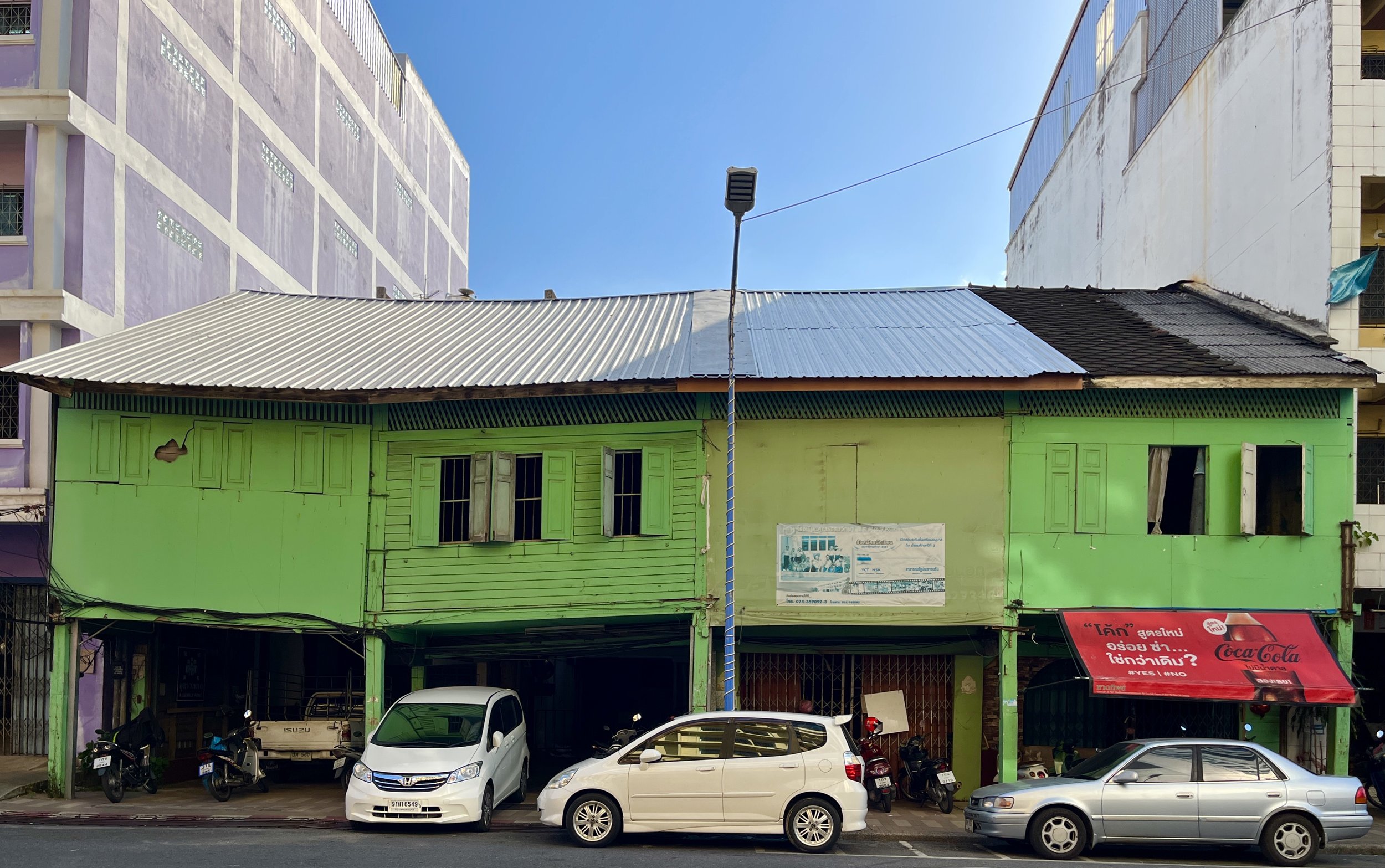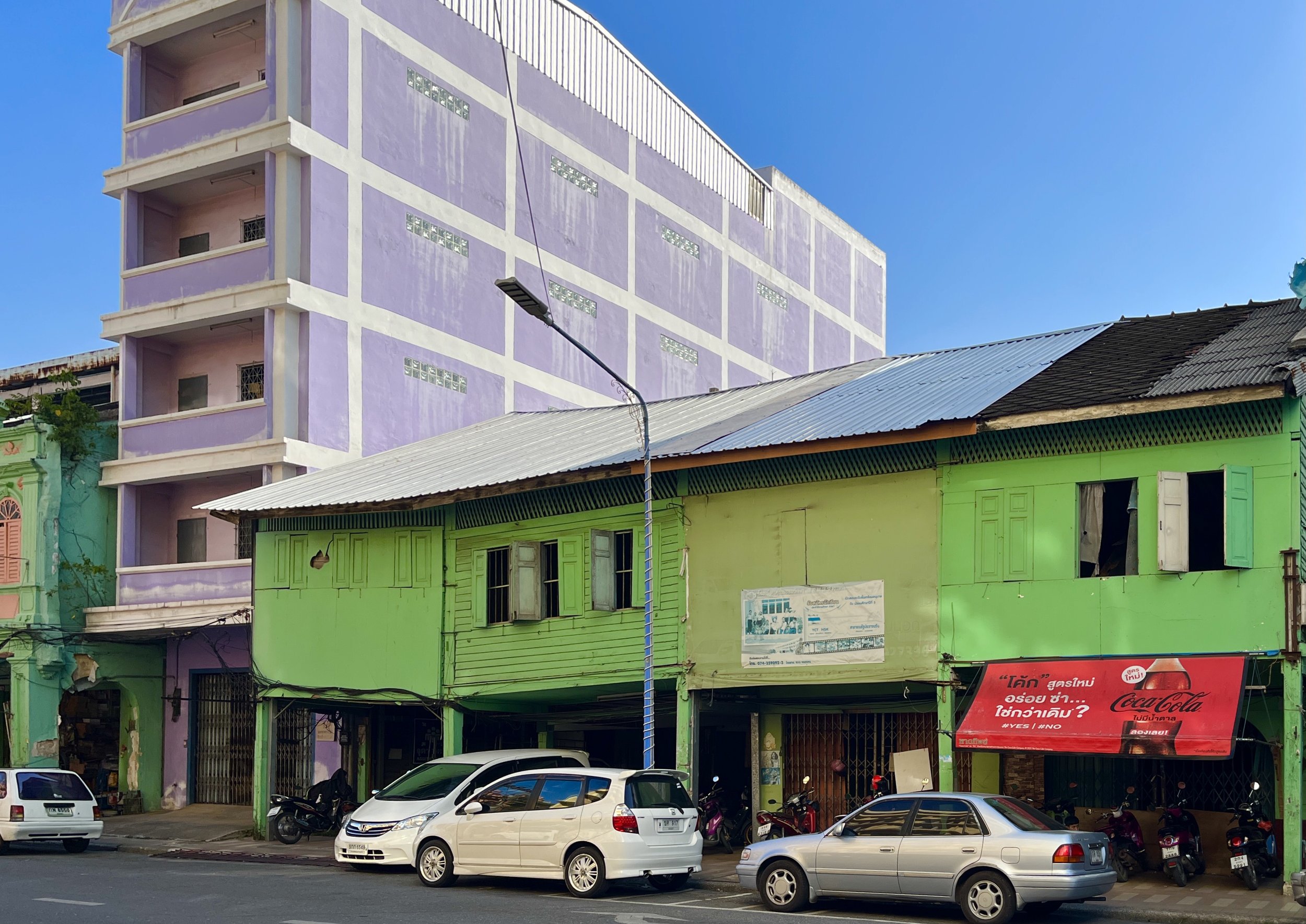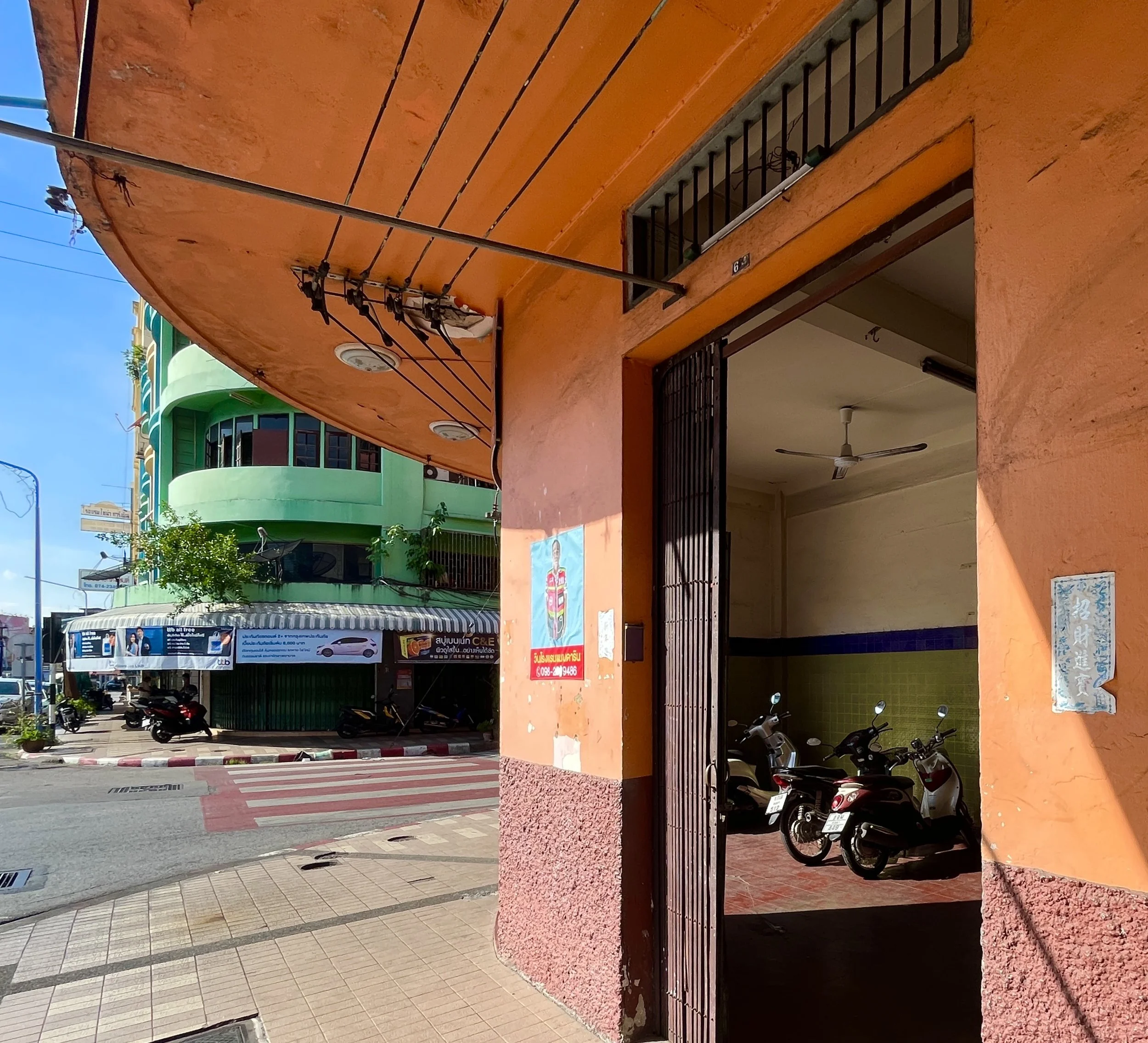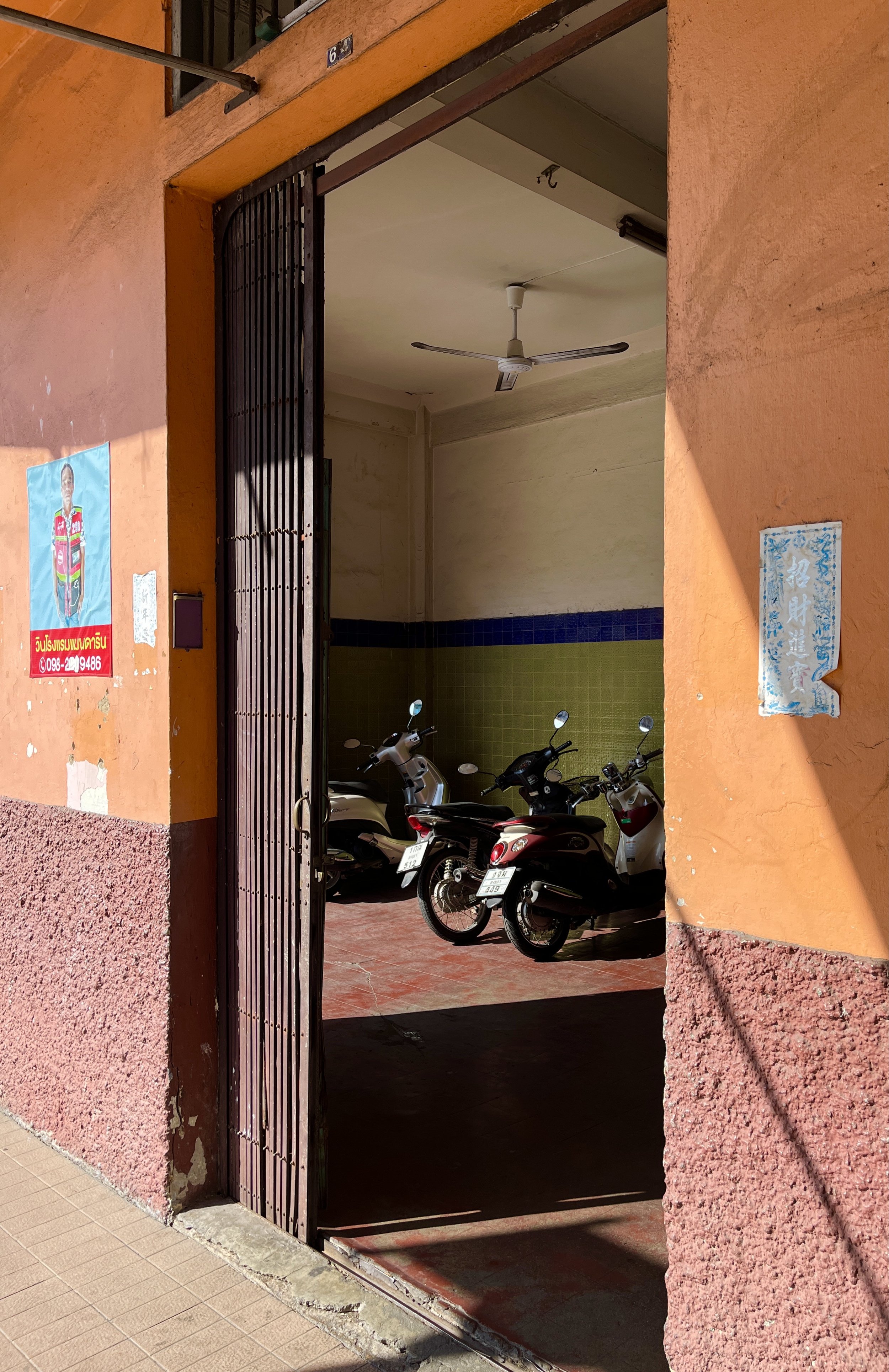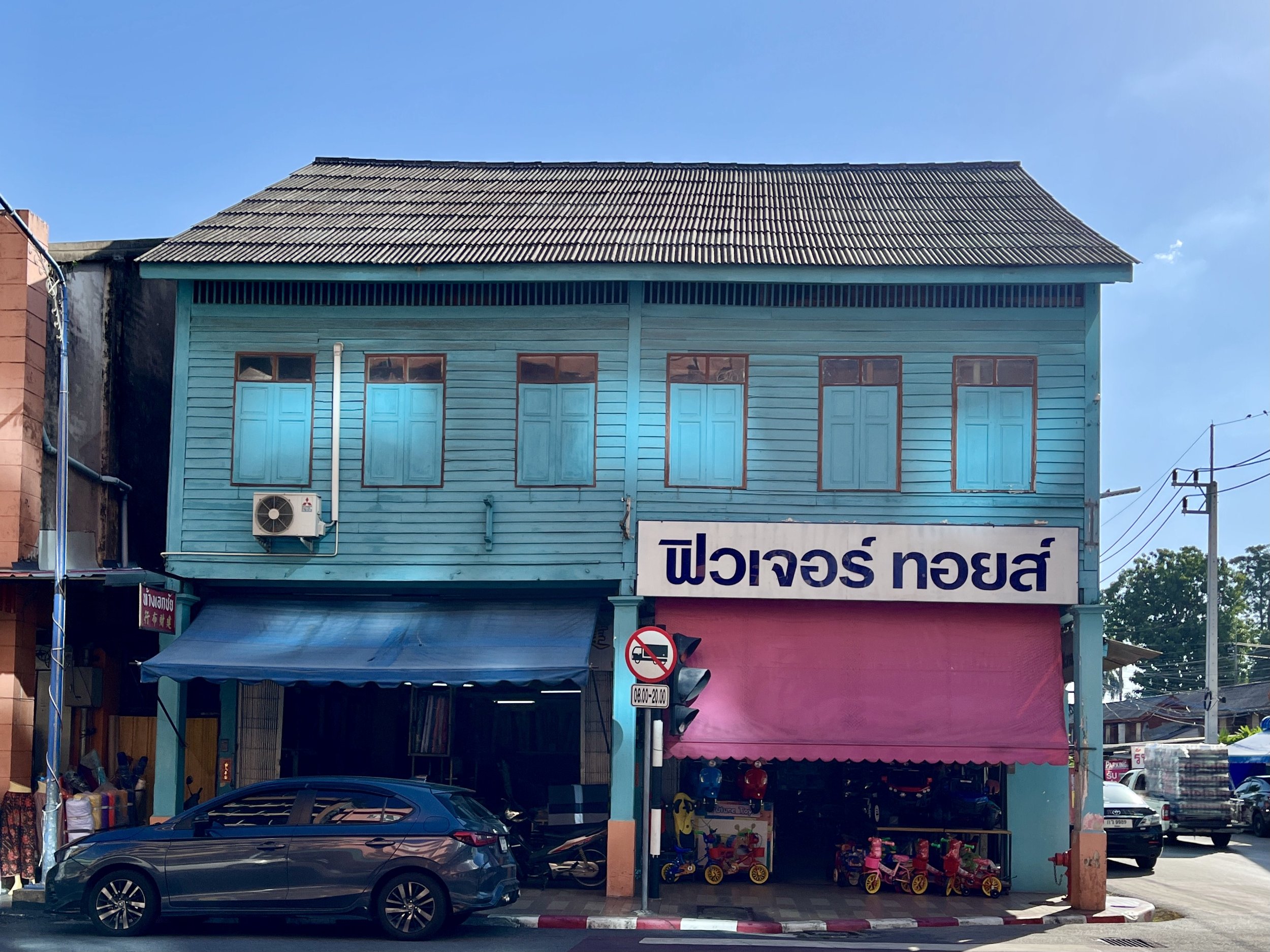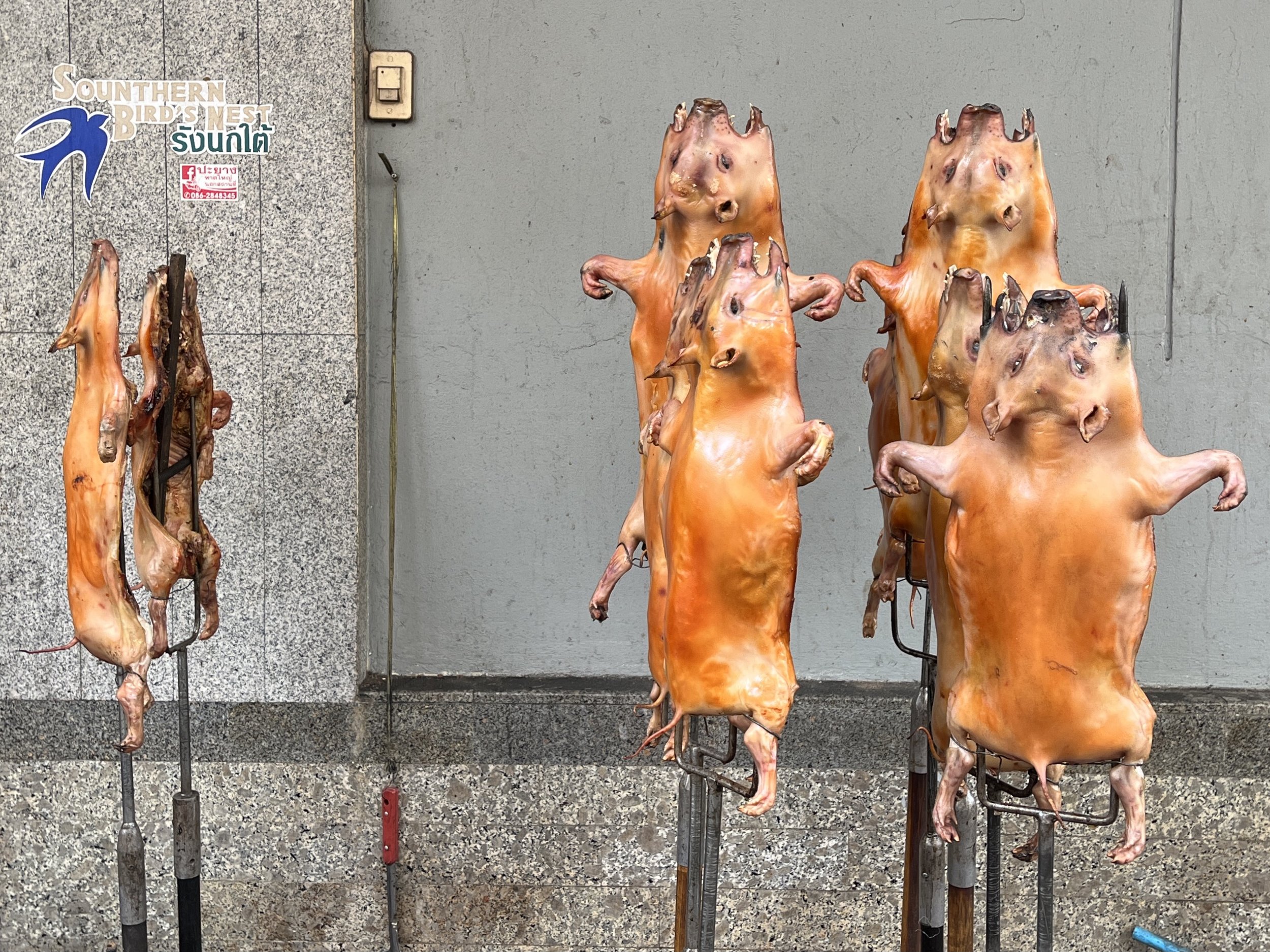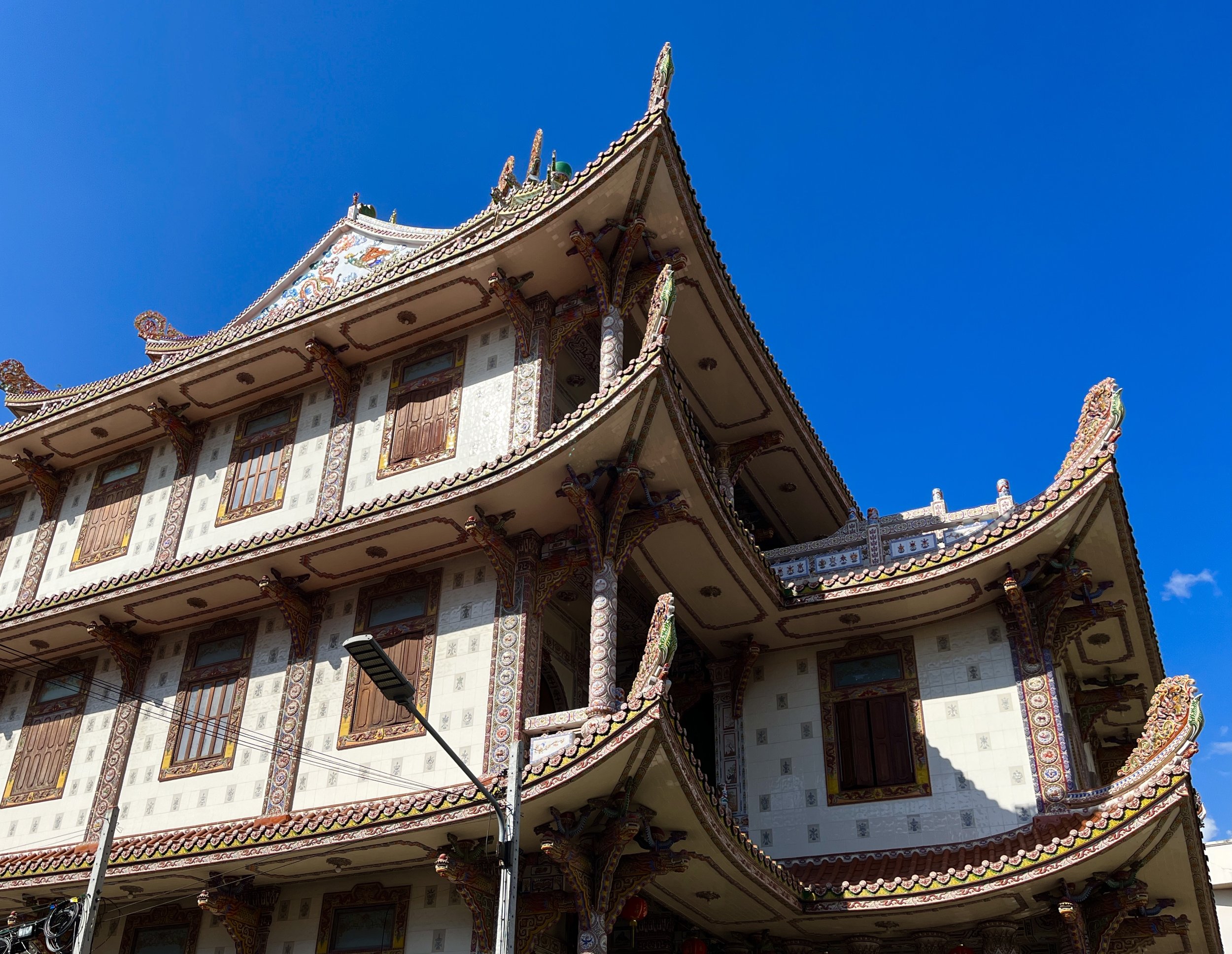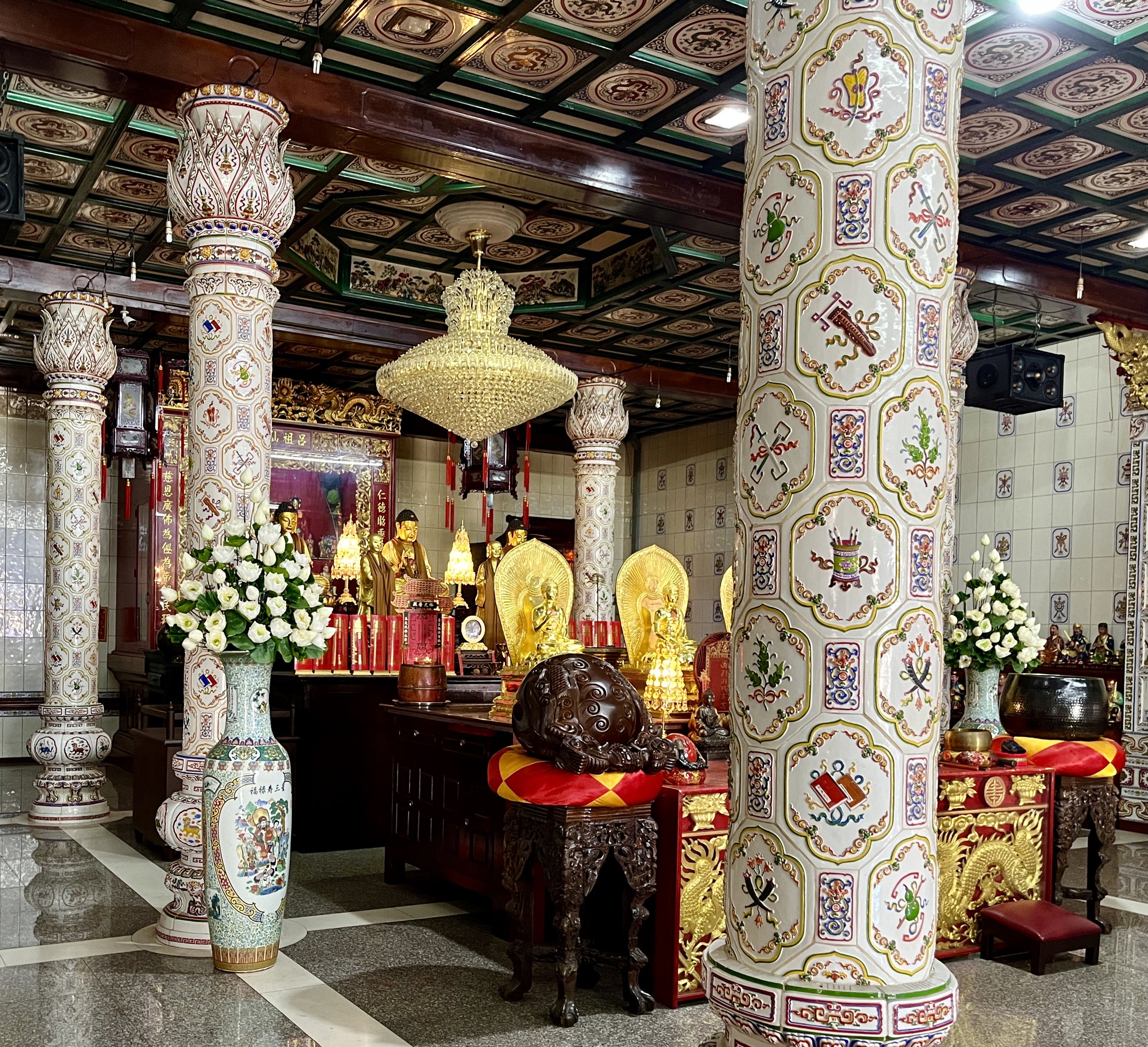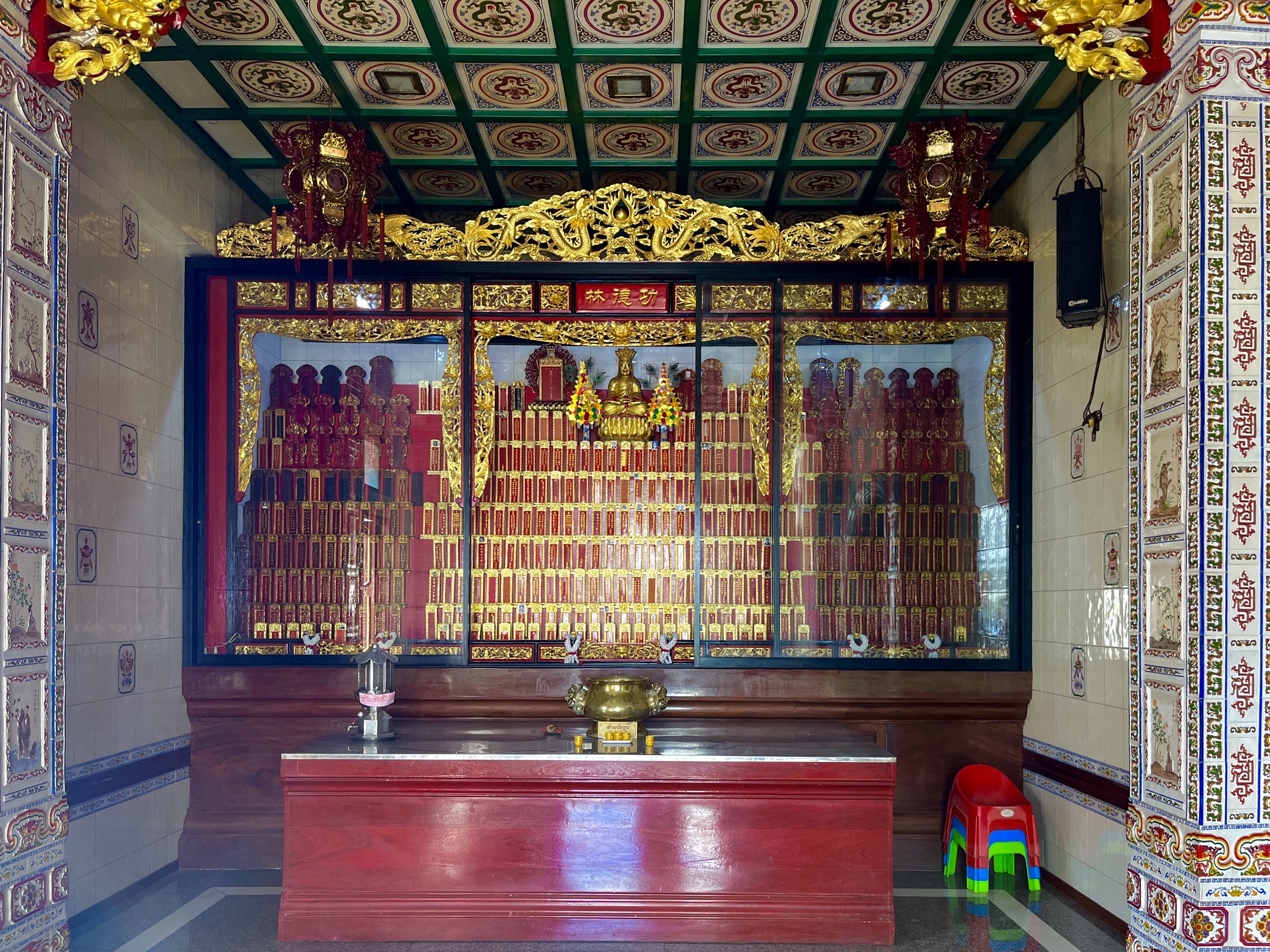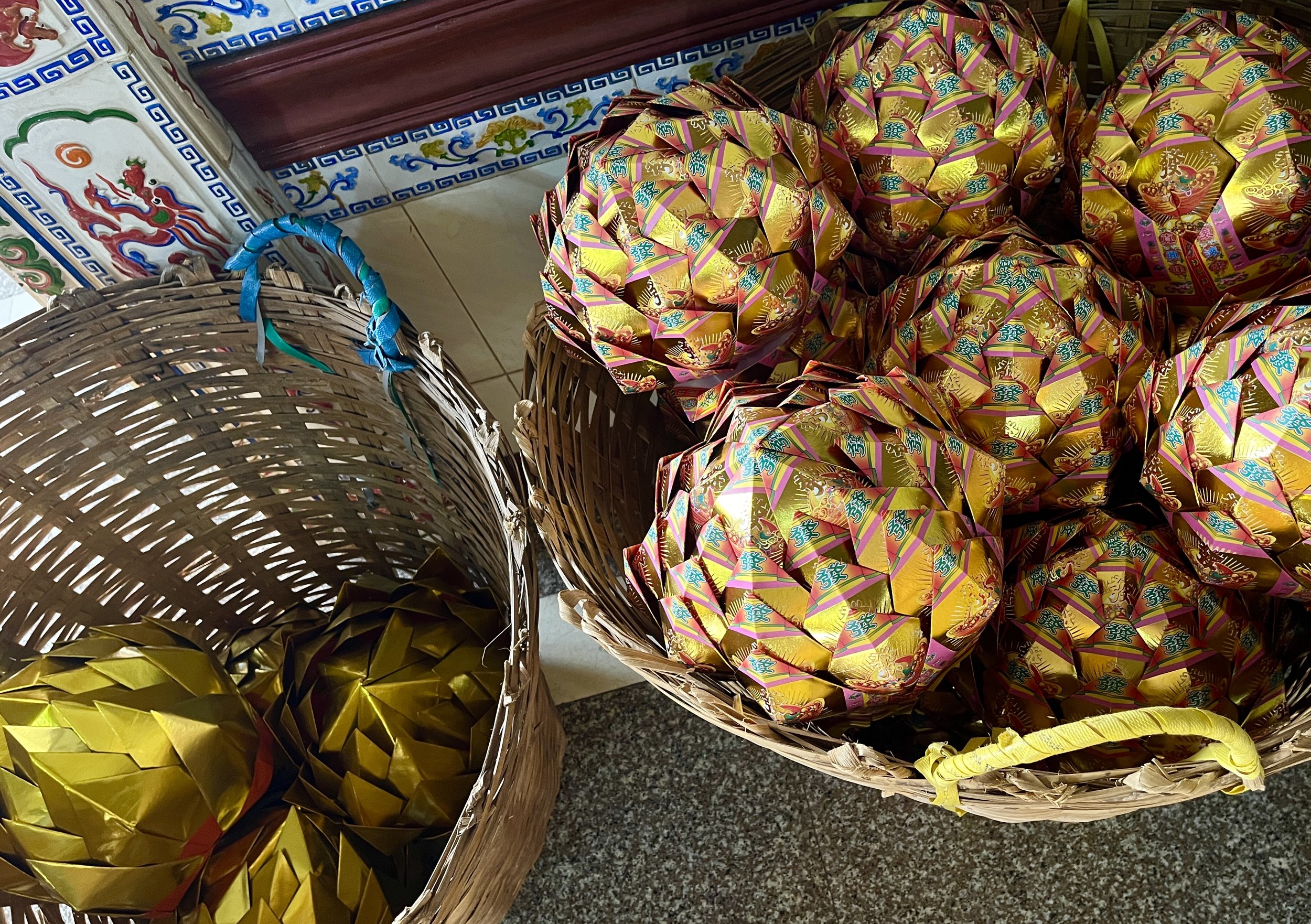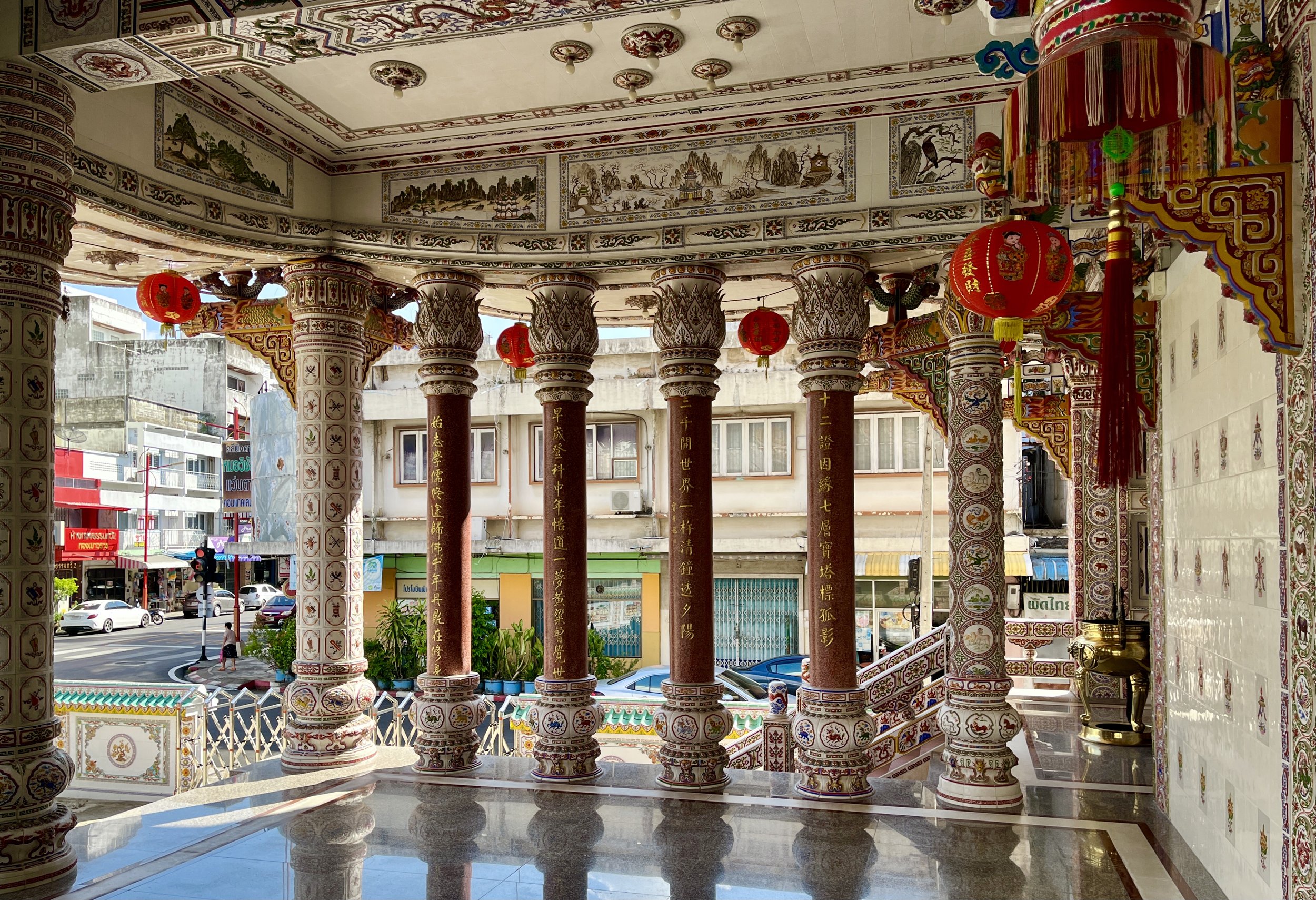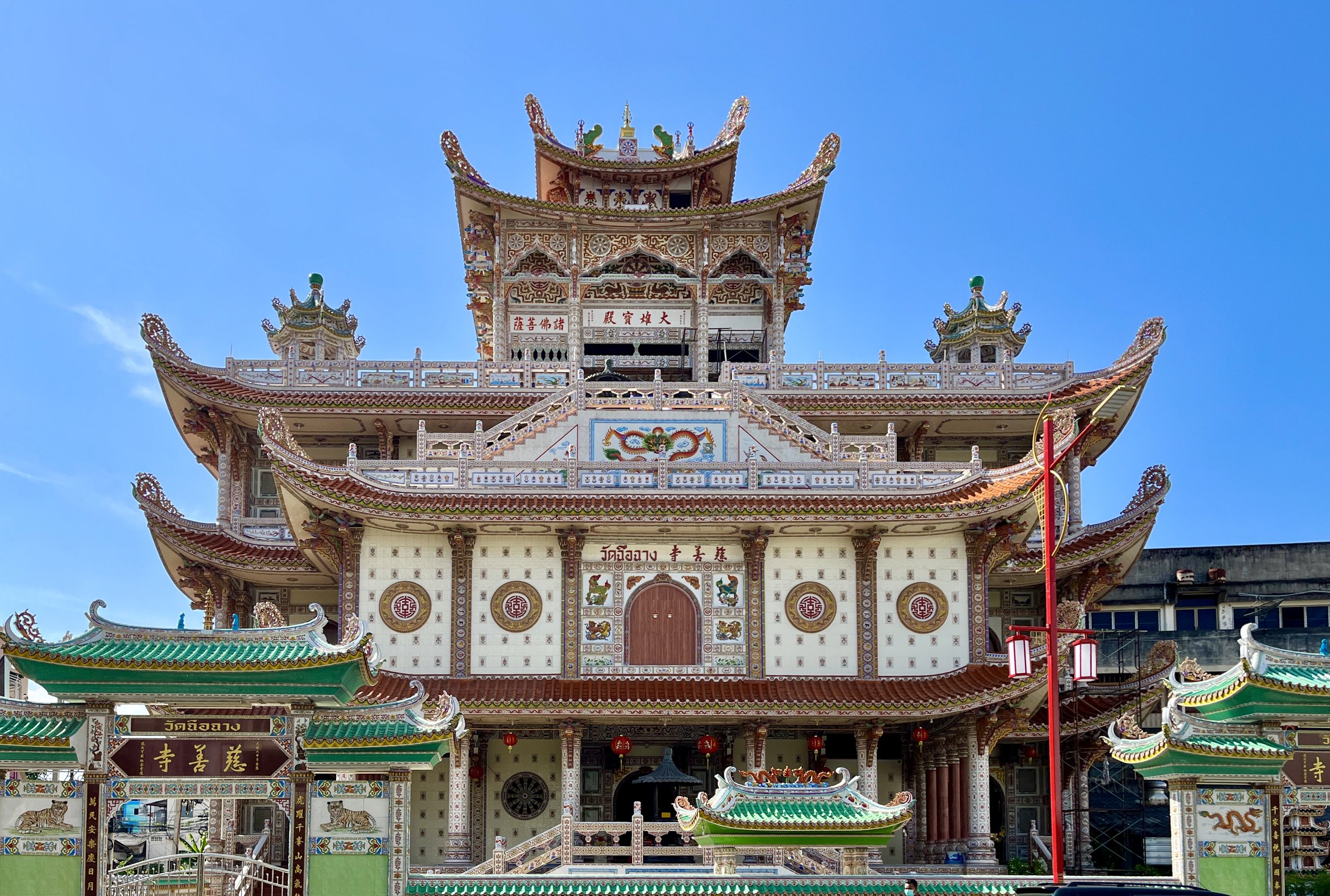On the outskirts of Phuket town, Chinpracha house is “thought to have been built”* in the third quarter of the 19th century, described in Thai sources as “in the final years of the reign of Rama IV” (Rama IV ruled from 1851- 1868). *This is the phrase used in all sources, as if the family doesn’t remember or can’t locate any records. In my opinion, perhaps an original house was built here in that era and later renovated beyond recognition, reaching its final form 20ish years later. Thais in the area who pride themselves on their Peranakan heritage insist on calling this sort of hodgepodge Victorian architectural style ‘Sino-Portuguese,’ though the Portuguese had been driven out of Phuket well over 200 years before construction began. Perhaps when I make it to Portugal I’ll change my opinion, but stylistically it looks to derive much more directly from the European-fantasy type palaces built by Chulalongkorn (Rama V) in the 1900s and 1910s.
Directly translated, “Chinpracha” means “Chinese Mr. Chua,” which makes me chuckle- they obviously didn’t take choosing a last name too seriously when the 1913 surname act came into effect and many locally-born Chinese felt socially pressured to assume more Thai-ethnic-sounding surnames. The lady of the house (an 80 or 90 something grandma) still lives upstairs, and her grandson and other family members lead the 150 baht tour around the house, and are happy to answer questions to the degree their quite decent English allows. Downstairs is a museum stuffed with all the family’s old furniture, most of it imported from China and Europe at doubtless great expense. Unlike many other museum houses I’ve visited, everything is their old stuff, not antiques bought secondhand and packed inside to create a cash-cow “museum”. They can talk about their old tin business, import-export business, liquor licenses, political influence etc. in some detail, and that history is reflected by the stuff they held onto.
Downstairs is a little café where they serve very basic snacks and drinks, and they have rental costumes if you want to dress in the Peranakan style and do a little photoshoot at the house. Right next door is a blue elephant cooking school in another, slightly younger, old mansion; if I had a bit more money at the time I visited I might have eaten something or gotten a drink there just to check out the interior. It’s also very close to the Michelin bib gourmand Charm Dining Gallery, a much better place to eat. For my final note, I did seek out and watch the old Oliver Stone film Heaven and Earth, which this house served as a set for certain scenes of . . . I enjoyed the house visit, but don’t bother with the movie!

























































